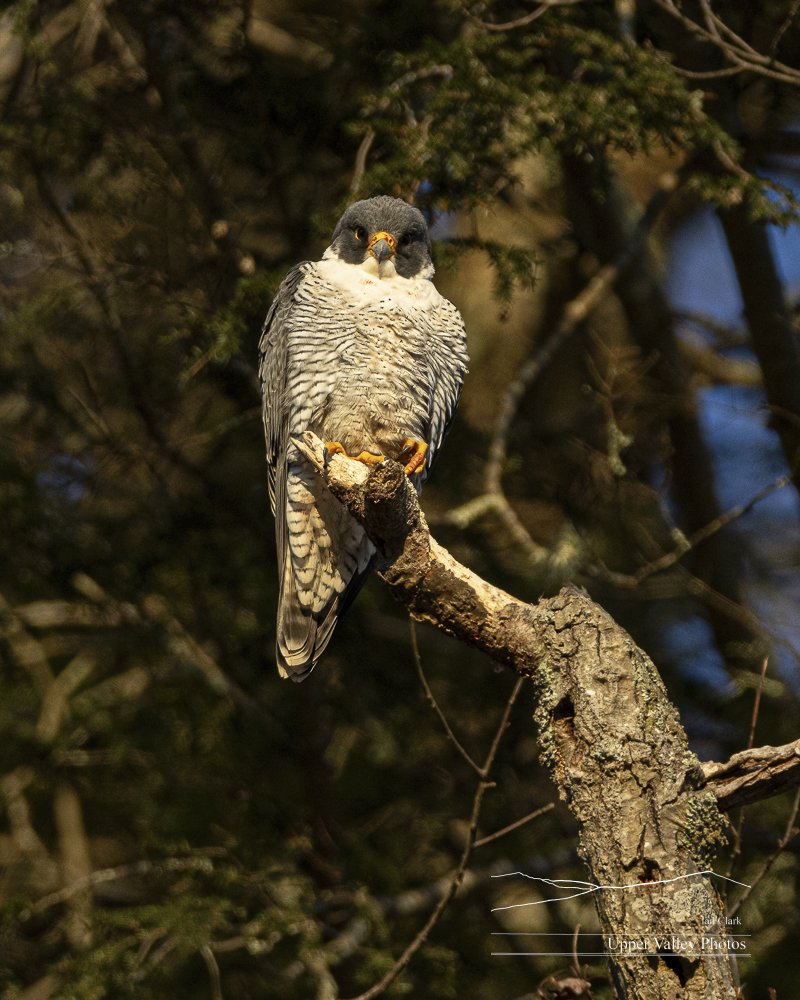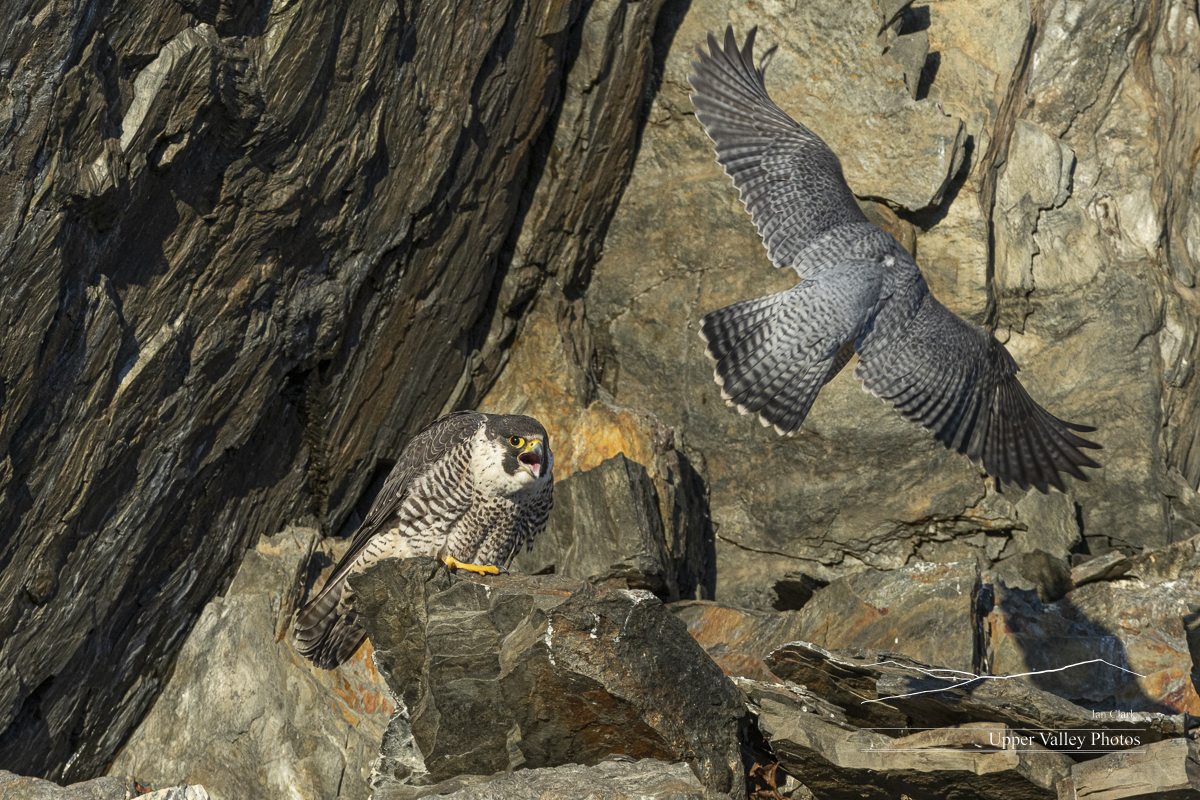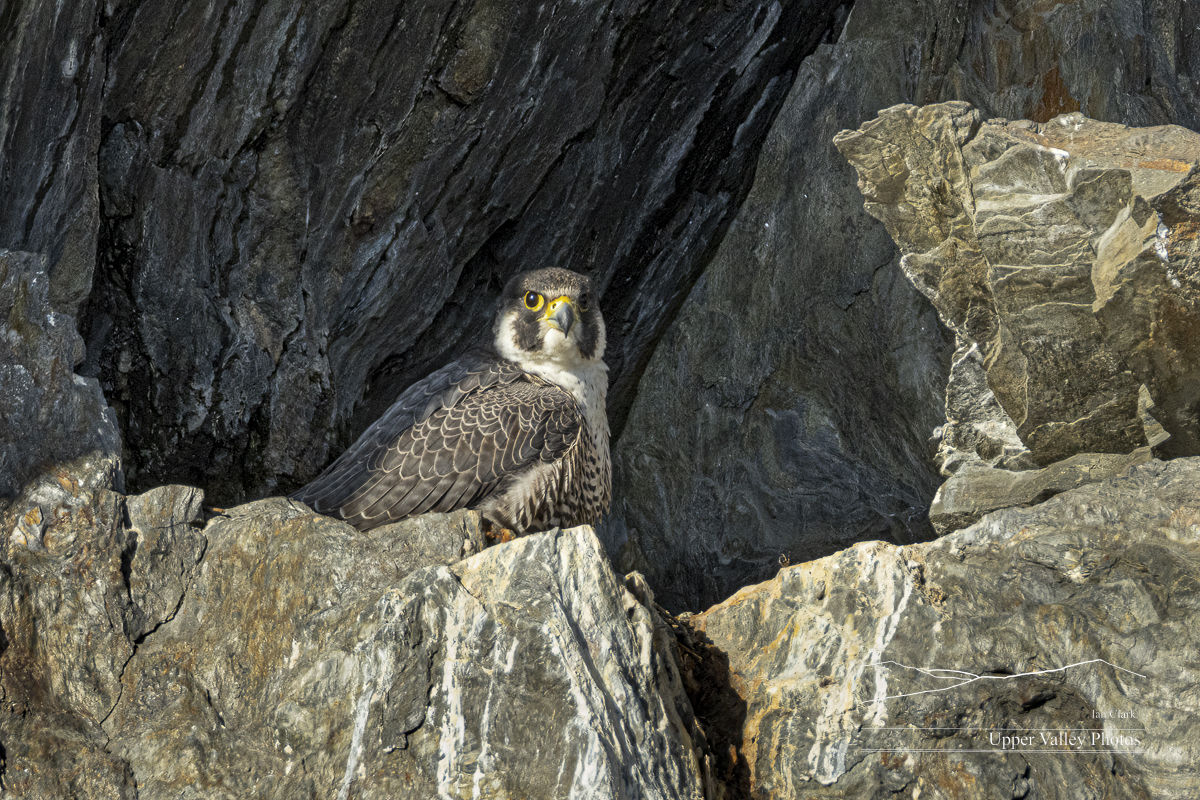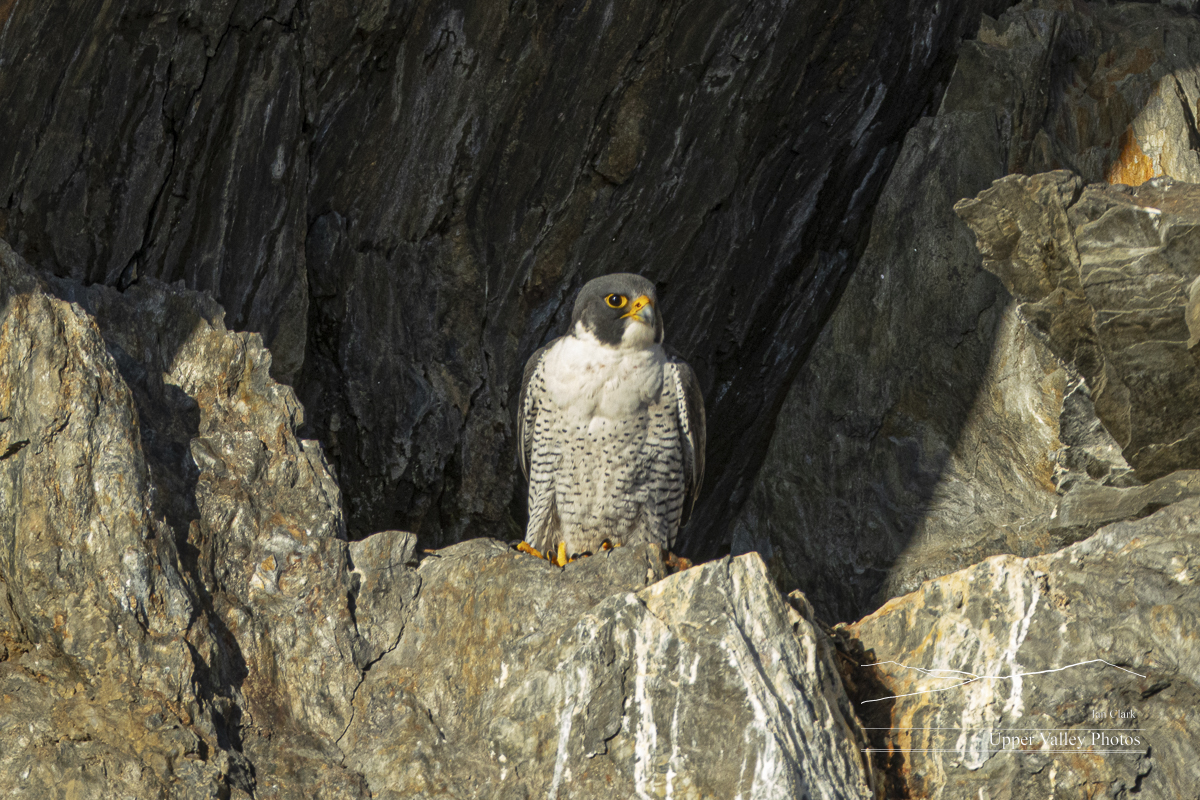Posts in Category: Wildlife Photography
Tips and advice for getting great wildlife photos


Checking Up on the Loons, et al
Let’s catch up with the Middletons and the Eastons, I’ve been to visit them – and their pondmates – a couple of times.
Tuesday evening I’ll be at the Loch Lyme Lodge in Lyme, NH to show lots of nature photos and present An Uncommon Look at the Common Loon. For details, timing and prices, see LochLymeLodge.com.
And the League of New Hampshire Craftsmen’s Fair opens August 3 and runs through August 11. I’m in booth 718. I’ve got lots of new images and favorites from years past. Come on by to have a look. If you’ve never been to the Fair, you’re missing a real show. Besides having some of New England’s best looking photographers, there is amazing work by all sorts of craftsmen, the skill is simply amazing. All the details about the Fair on the League’s site: NHCrafts.org.
The Eastons were receiving visitors when I showed up on July 14. Mom was tending the nest and dad was enjoying a peaceful morning. For a time.





Dad checked in on Mom and everything was peaceful when I left.
July 17 was the first day their eggs might have hatched. I went up to see how they were getting on. (They lost their first clutch, likely due to flooding.)










I went back on July 19 to see if the chicks had hatched.


On the 20th, I checked in on the Middletons. There was a thick fog when I put in and finding the family was a challenge. Until they swam out of the fog right in front of me.
The last time I visited, I was a bit concerned about the smaller chick. The larger chick had been pecking at him? constantly when he was with the family. The smaller chick had been separating from the family far further than normal at this age. This time, both chicks were traveling with the parents and the sibling rivalry seemed under control.












This morning, I headed back to check on the Eastons. There were several deer and a nice bull moose out and about. When I arrived it was a very pleasant 56° with a dead calm wind leaving the water with almost perfect mirror reflections. There were just a few whisps of clouds above and it promised to be a great sunrise on the pond.




A wren has claimed one of the boxes on our deck. She’s spending her morning alerting the world that this is her corner and she isn’t to be disturbed. For sheer volume of song per ounce of bird, there can’t be any noisier bird than a wren.


Loon Update July 12, 2024
I’ve made it out to check on two of our three loon families, and have heard reports from the third.
The Loch Lyme Lodge in Lyme will host me to present An Uncommon Look at the Common Loon in the evening of July 23, part of their Tuesday Night Cookouts. We’re still figuring exactly when I’ll present, as soon as we know, the details will be on their site: www.LochLymeLodge.com.
And, I’m busy getting ready for the League of New Hampshire Craftsmen’s Fair, August 3-11 at Mount Sunapee Resort in Sunapee, NH. I’ll be in booth 718, come on by and say hello. All the Fair details are on the League’s Site.
While I haven’t had a chance to visit the Westons, a friend reports they’re doing well with the one chick. And, mom seems to be hanging around.
The Eastons lost their first clutch. All I know is the nest was empty when I visited. The water was up to the lip of the nest, I suspect the nest flooded. They’ve decided to try again and the chicks are due in the next few days.




The big news from the Middletons is that the Loon Preservation Committee biologists were able to band both adults over the July 4th Holiday. LPC tries to band something like 30-35 loons every year – almost 5% of New Hampshire’s loon population.
Banding lets them track individual loons over many years giving insights on behavior. Loons get four bands, one with a unique number from the United States Geological Survey (hey, it’s the government). Being unique, that number will forever definitively identify that bird. But the numbers on the USGS band are small and all but impossible to read unless you’re holding the bird. Loons aren’t big fans of being held, so they get three more bands with a mix of colors. If the bird is banded as a chick, the USGS band goes on the left leg, if they’re banded as adults, they wear it on the right leg. The color combination gives a nearly perfect way to identify the individual without having to catch it.
Along with banding the birds, they also take measurements to learn about size and weight along with blood to test for lead, hematocrit (concentration of red blood cells) and for infections including avian malaria.












I’m hoping to get out to check on the Eastons and Westons this weekend, weather permitting.
Update on Our Loon Families
There’s news – good and disappointing – from our three loon families.
I’ll be at the Blake Memorial Library’s Art, House and Garden Tour July 6 & 7. The Library is in Corinth, VT, the Tour takes you around Corinth and Topsham. I’ll be set up at the Topsham Town Hall. All the details here.
I made it up to visit the Eastons on the 25th. They were in the window where their eggs could hatch. Sadly, I found an empty nest. The water was up to the lip of the nest and had probably been higher the days before my visit. The good news is that it looks like they’re going to try again. They were defending an island where they used to nest. I hadn’t realized they’d claimed the island until I attempted to beach my boat to fiddle with my gear. Dad explained that I had to go. So I did.
Update: I visited the pond again Sunday afternoon, there was a loon sitting a new nest.



The LPC is a great resource for loon info. Over the years, John has been very generous answering my endless questions. Thanks John!
The Middletons were out and about when I visited on Friday. The chicks are growing rapidly and appear to be in good health. When I arrived, there was a thick fog on the pond. I had to make two circuits before finding the loons in deep shadows as the sun rose.








When I last posted, Mrs. Weston hadn’t been seen for five days and I feared the worst. Later in the summer, it is common for one of the parents to disappear for a couple days. Probably for R&R on a nearby pond. I was concerned as the chicks were very young and it seemed she was gone a long time.




Want to help the loon conservation effort? The loon census is coming up on Saturday, July 20. The idea is to get volunteers to check all the ponds at the same time to get an accurate count of all the loons and chicks. All you need to do is go for a paddle around your pond and count the loons. For more details or to volunteer in Vermont, see the Vermont Center for Ecostudies’ site, https://vtecostudies.org/projects/lakes-ponds/common-loon-conservation/loonwatch/participate/. In New Hampshire, check out the Loon Preservation Committee’s site at https://loon.org/census/.
Loon Chicks Have Arrived
Two of our loon families – the Westons and Middletons have hatched two chicks. I’ve been out to see how they, and their neighbors are doing.
The Tenney Memorial Library will host me this Sunday, June 23, at 2:00 p.m. for my slideshow, An Uncommon Look at the Common Loon. Free and everyone welcome.
I left a game camera looking out my blind by one of the fox dens. Here’s a minute of foxes big and small coming and going.
A neighbor told me he has a whippoorwill stopping by late every evening and early every morning. I sat out by his garden and got a good listen to the whippoorwill. Unfortunately, it was too dark to see him. So far, he’s eluded my game cameras. My consolation prize was a pair of bobolinks:


A friend on the Weston’s pond messaged me on the 13th, telling me they’d seen a chick. I headed up to visit that evening.






By the 16th, the Middletons were in the window for the chicks to hatch. I headed over early, in heavy fog. It was a fine 36° when I put in. Heavy fog made it hard to find the loons.





A quick reminder about photographing chicks – give them their space. I’m using a long lens – something like a 20x scope and these images are heavily cropped.








Early on the 18th, I headed up to check on the Westons. It was 74° when I put in, almost 40° difference in two days.
There was sad news when I got out on the pond.






I went back up to the pond on the 19th, on a very hot and hazy morning.






An Update on the Loons’ Ponds
The weather has kept me from getting out the last few days. The Westons should have chicks by now, the Middletons are due momentarily and the Eastons will be on their nest another couple weeks. Let’s see what else has been happening.
The Tenney Memorial Library will host me for my slideshow, An Uncommon Look at the Common Loon on Sunday, June 23, at 2:00 p.m. Free and open to the public.
Before we get to the ponds, take a look at what my game camera caught. This camera was set up in my blind watching one one of the fox dens. Guess I’m glad I took that morning off.
There’s less activity around the ponds. Most songbirds are on their nests or feeding chicks and not out and about to be photographed.



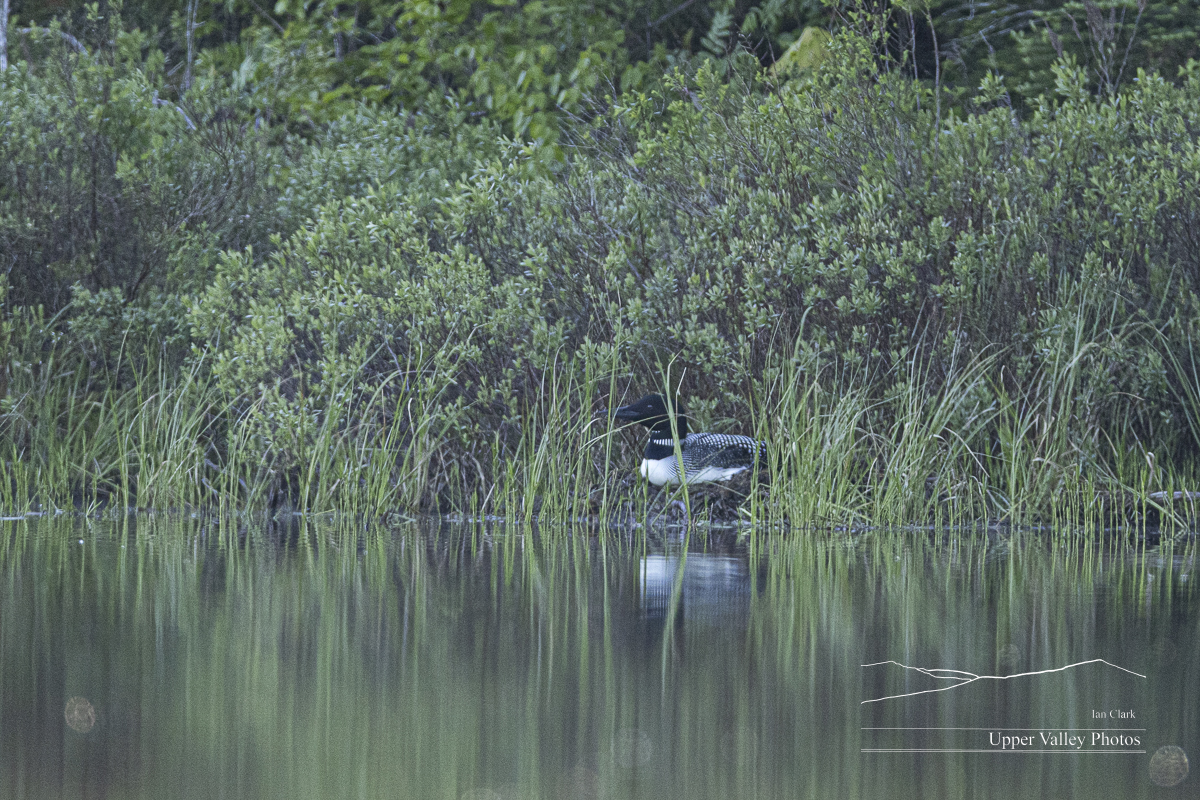
The resident osprey was interested in fishing in the relatively shallow water near the loons’ nest. The off-duty loon seemed to be moving out of the way for the osprey to dive. Professional courtesy or just not wanting to be nearby when the osprey dove? The osprey finally caught breakfast well down the pond.
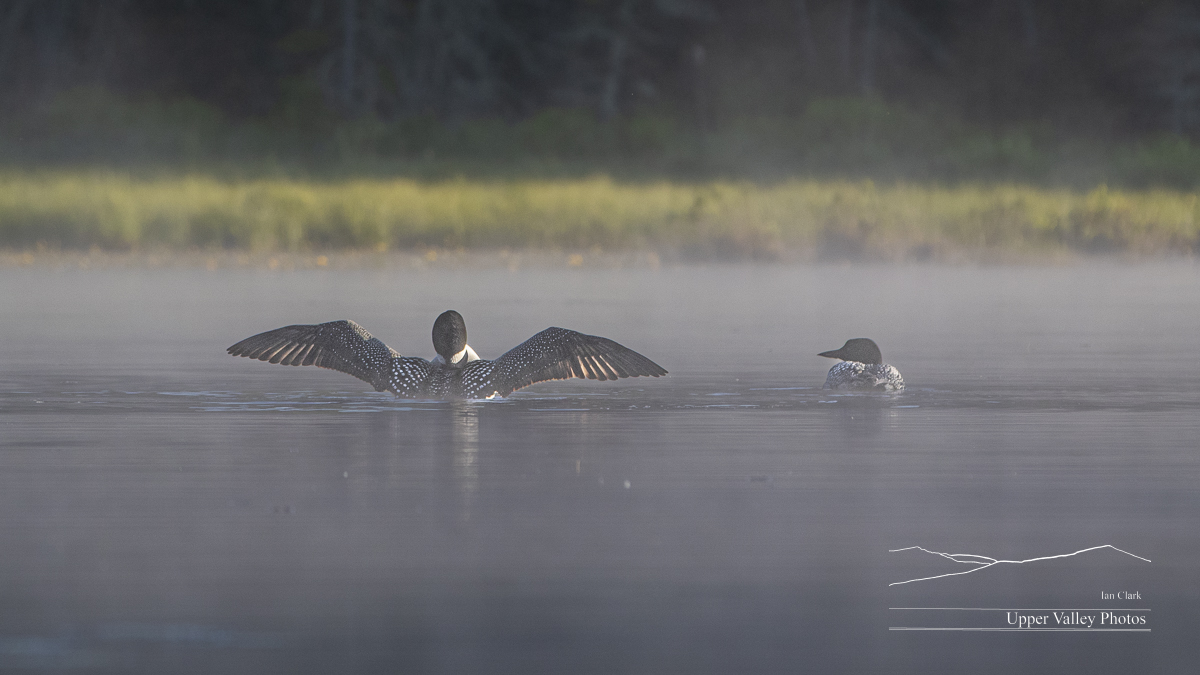
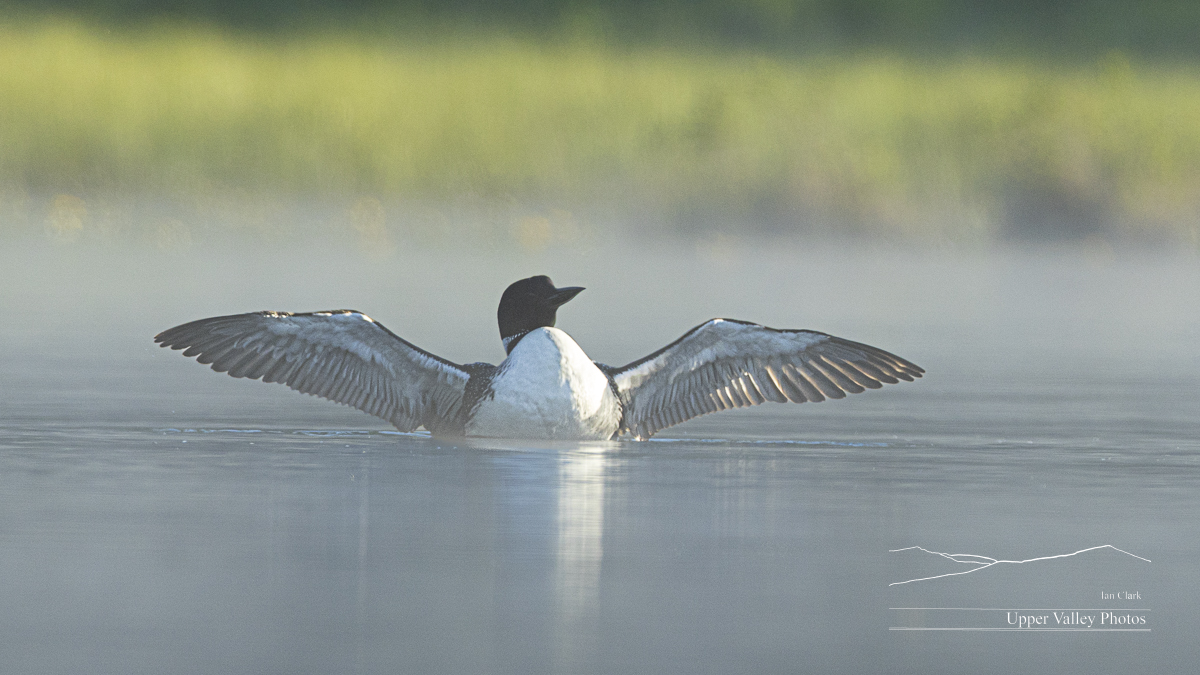
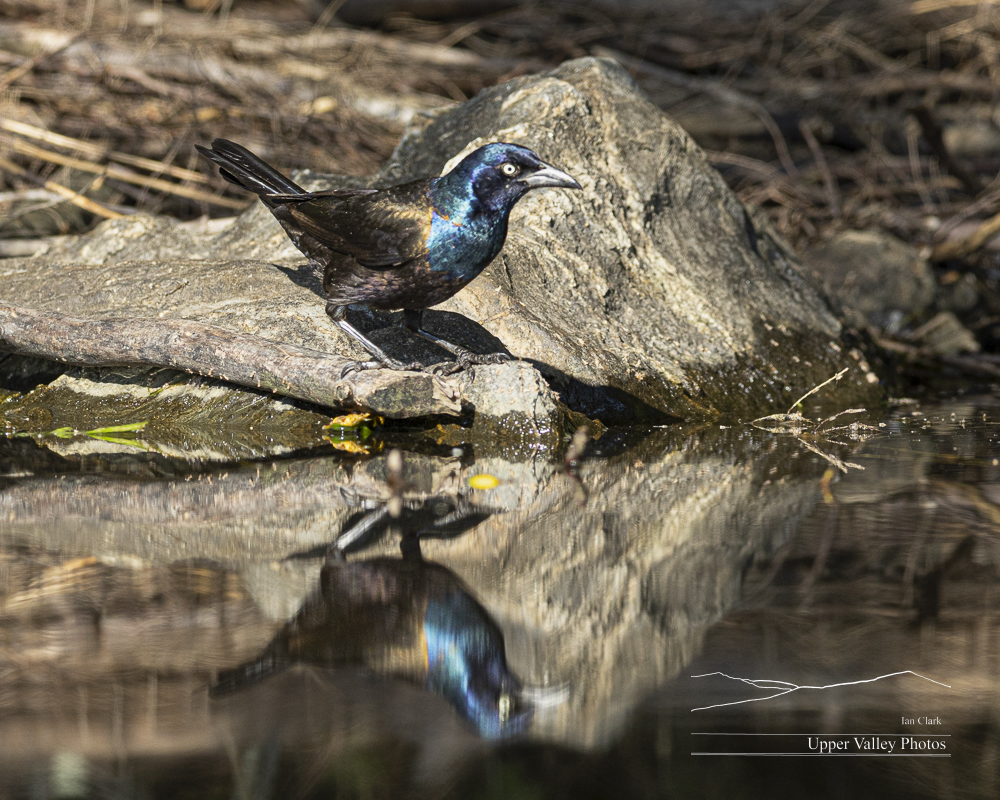
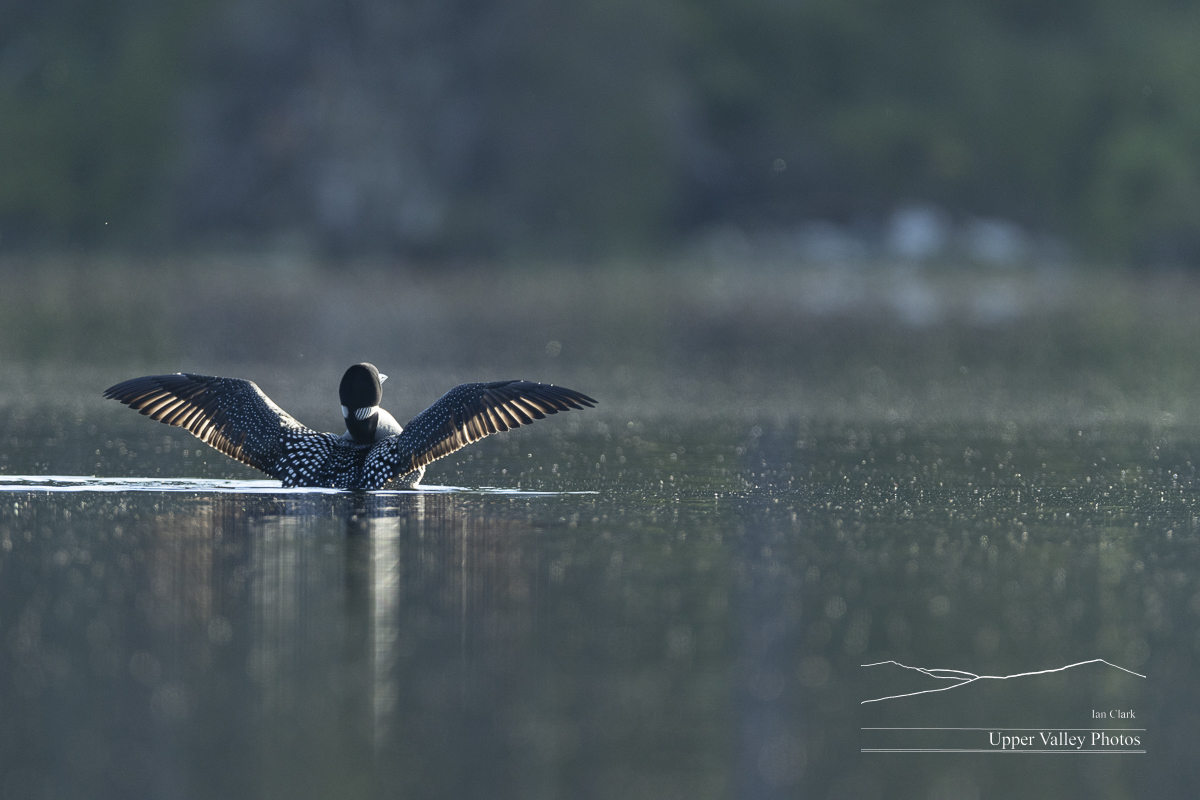
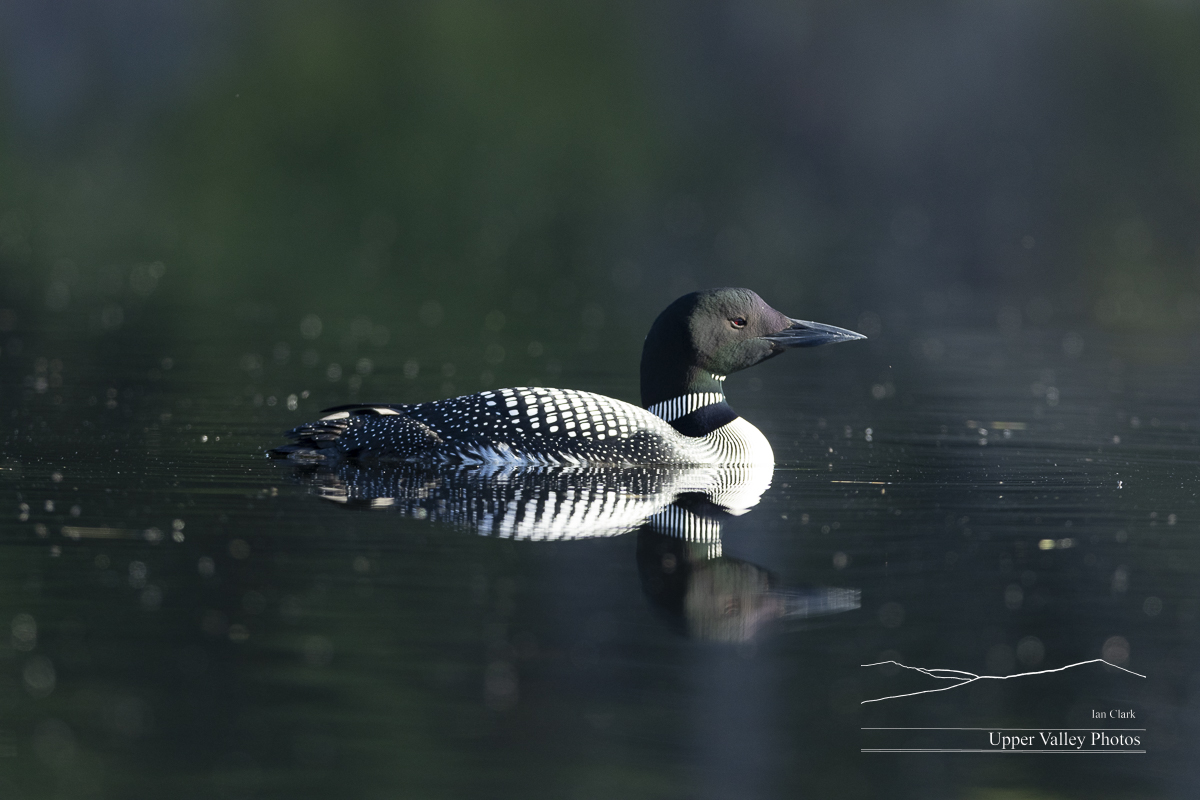
I’ll be out to check on the chicks as soon as the weather breaks. Check back soon to see how they’re doing.


Catching Up with Life on the Ponds
With all the nice weather, I’ve had lots of time to shoot – but that leaves little for posting. One set of fox kits has moved on, the other den is surrounded by grass tall enough that the kits appear only at the top of their pounces. Let’s check in on our three loon families and their neighbors.
I’ll be giving my slideshow, An Uncommon Look at the Common Loon, locally a couple times in the near future. First is Thursday May 30 at 7:00 p.m. at the Lyme, NH, School. Then again on Sunday June 23 at 2:00 p.m. at the Tenney Memorial Library in Newbury, VT.
The Westons are sitting on at least one egg. Their nest is deep in the marsh, updates will have to wait until the chicks appear. (If you’re new to my blog, to protect the loons’ privacy, the families are the Eastons, Middletons and Westons, by the location of their ponds.)











wave.



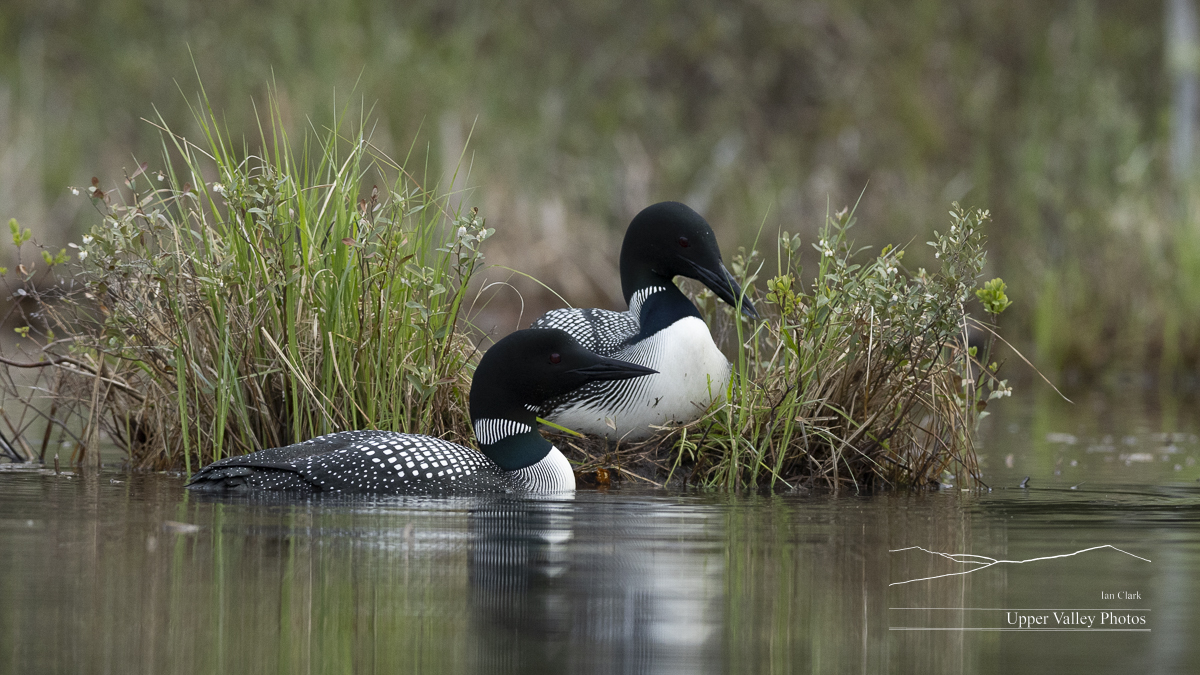
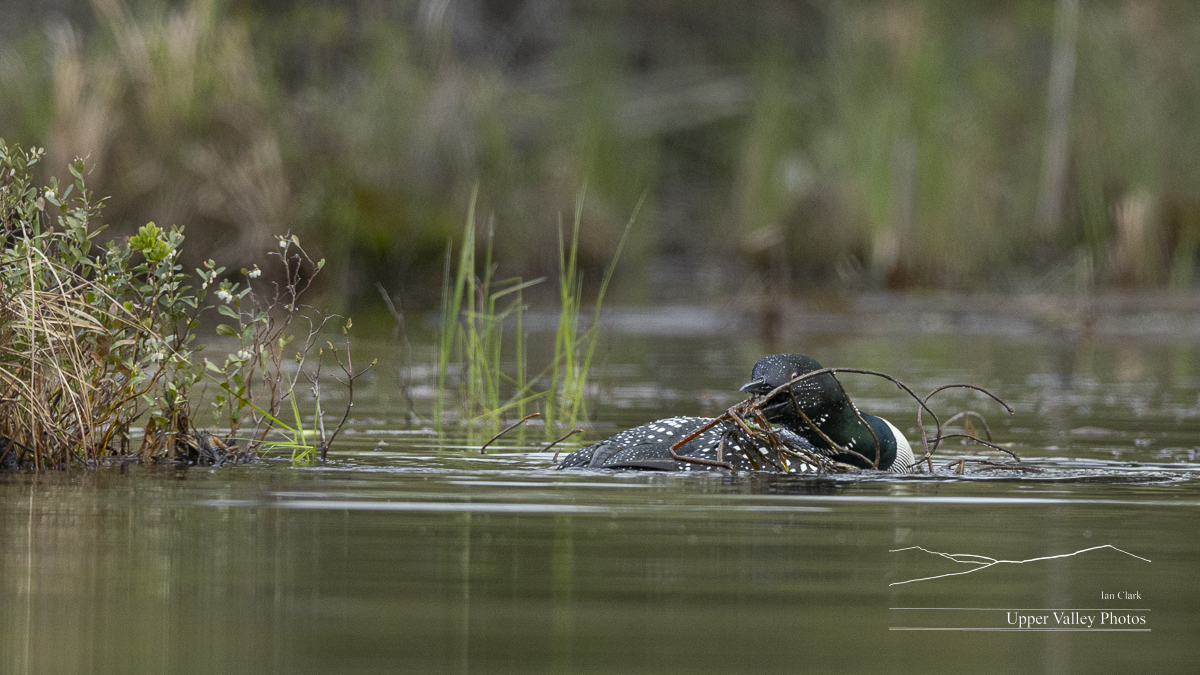

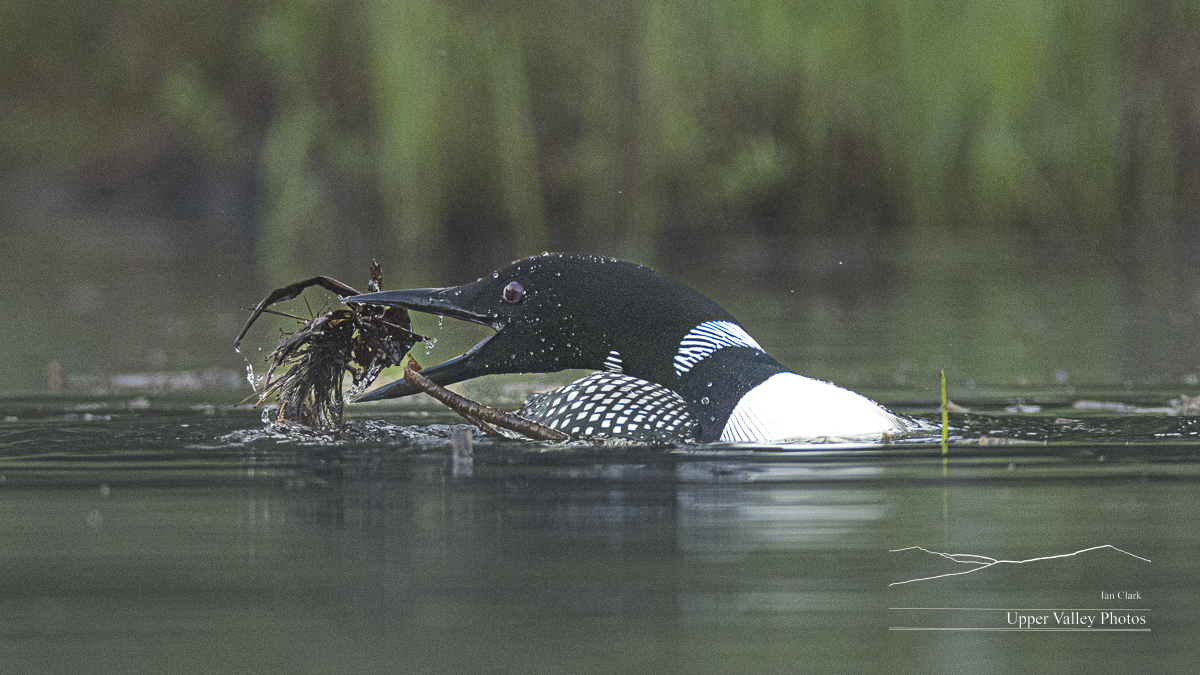
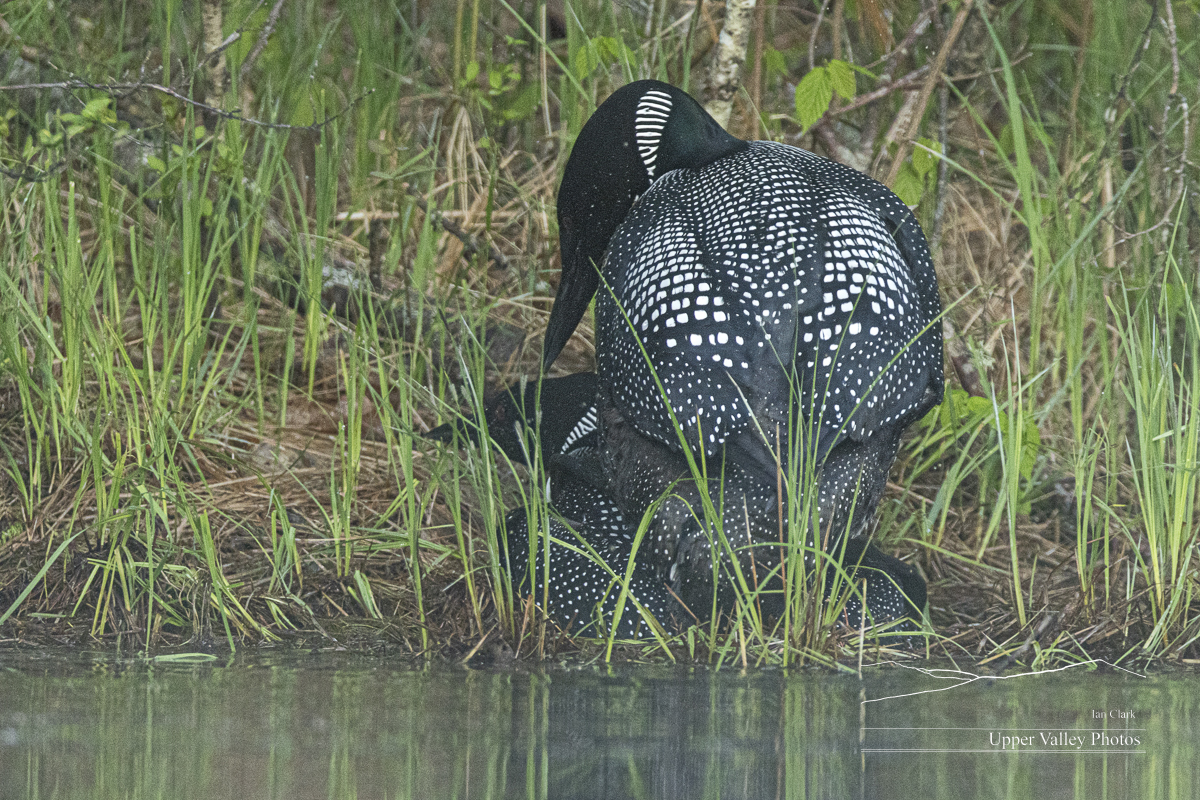
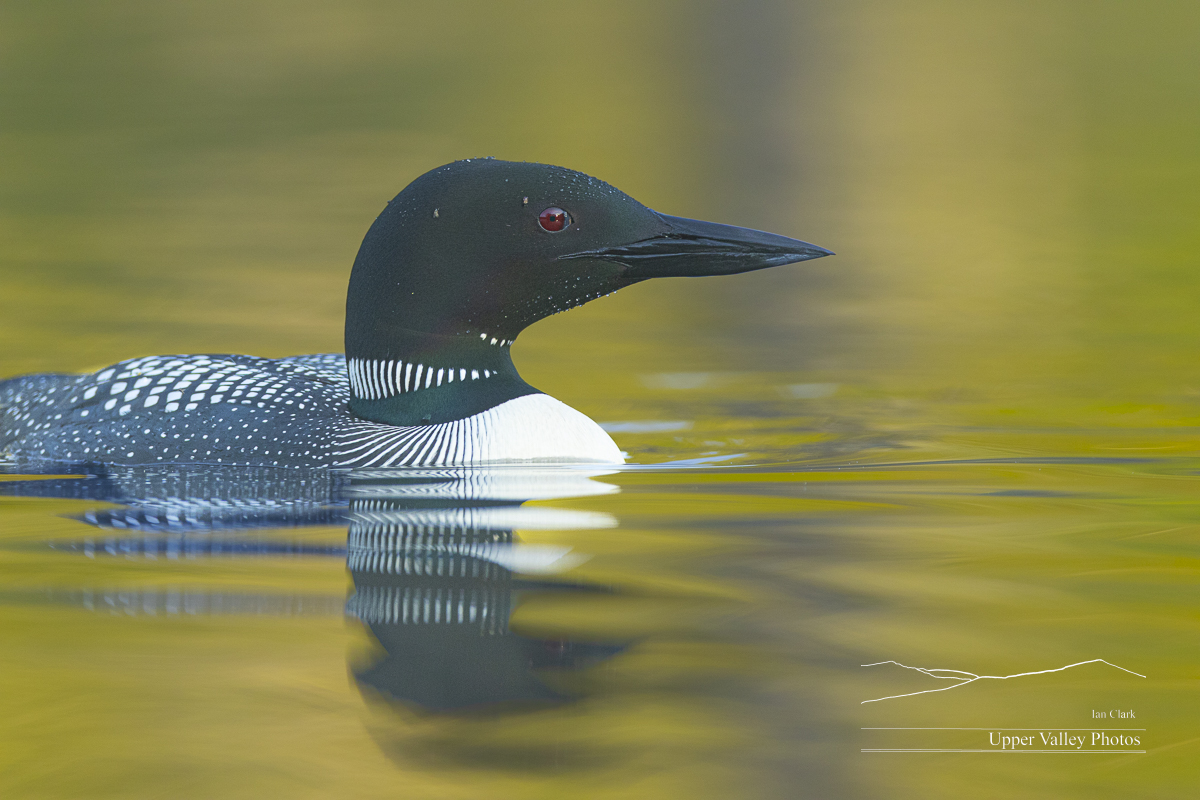


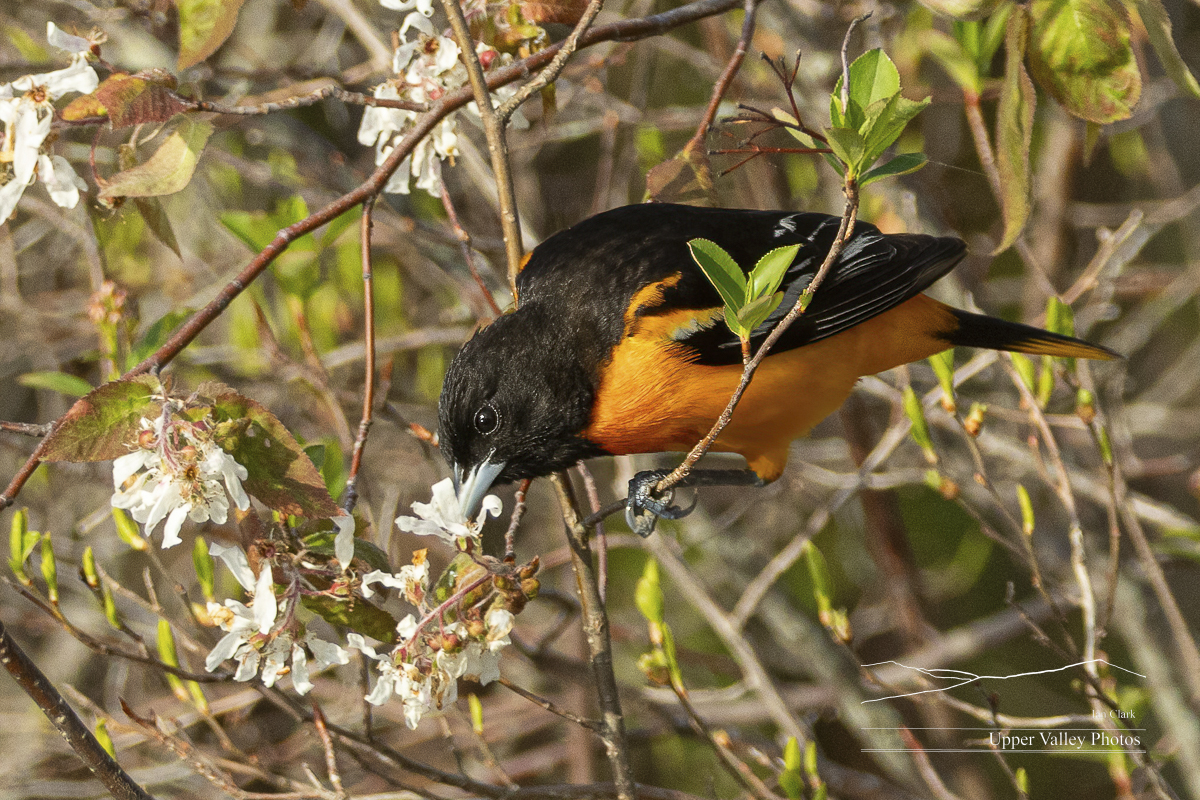

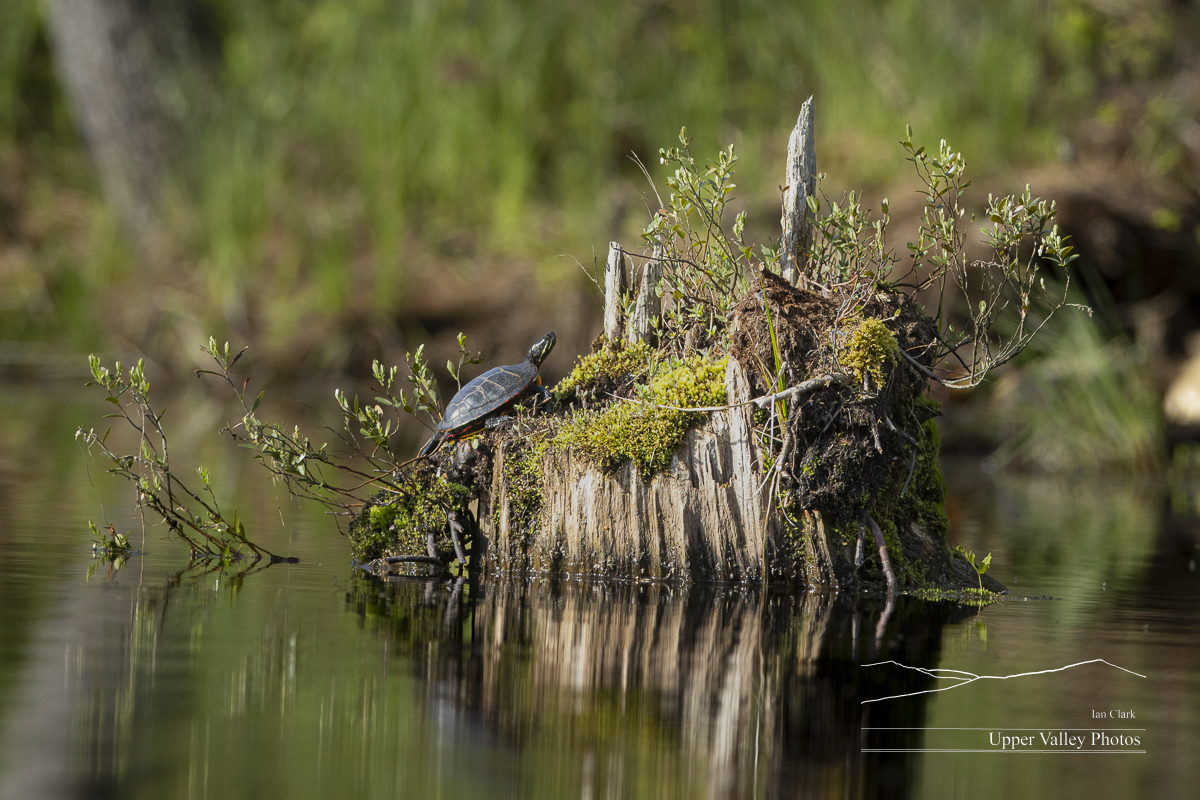
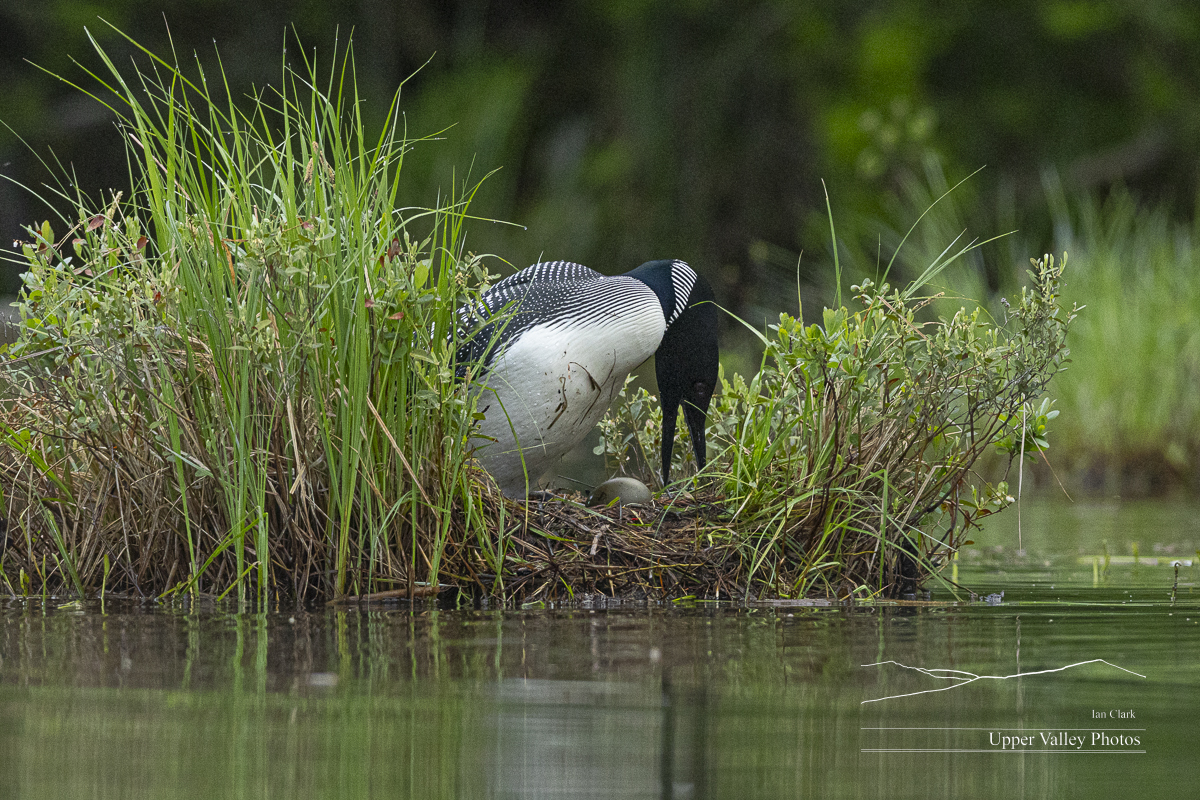

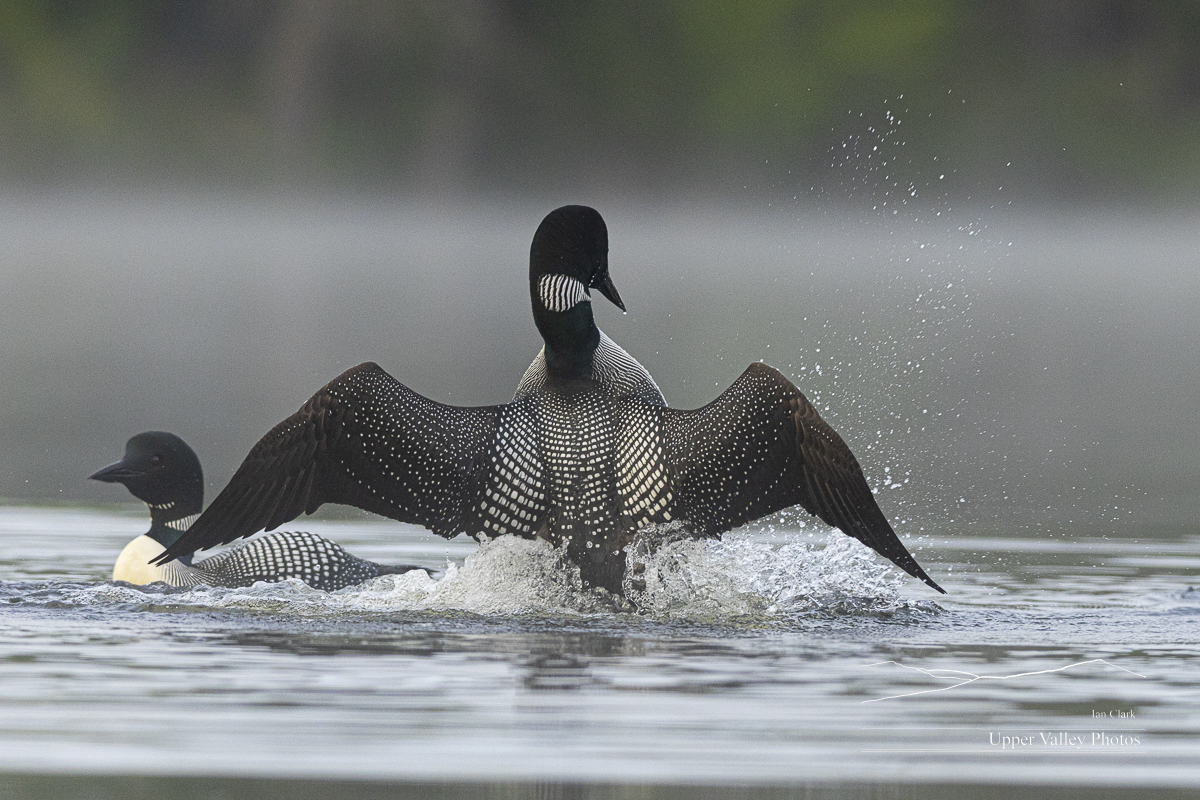

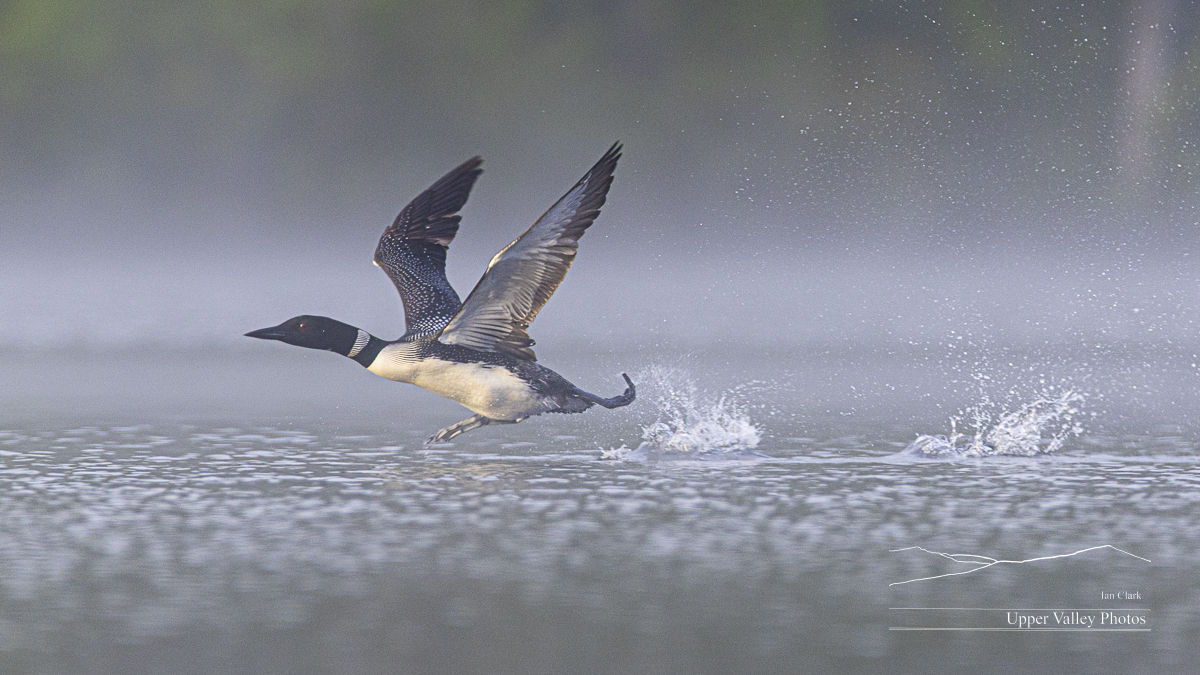

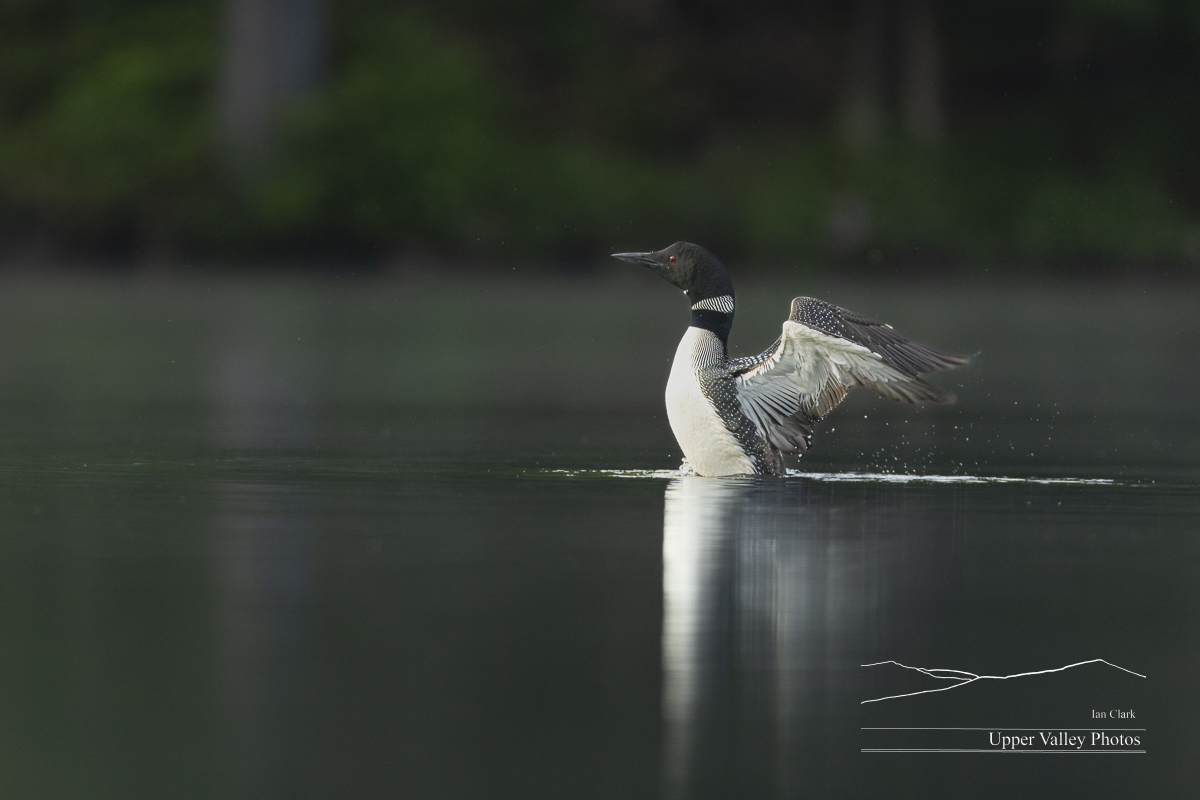
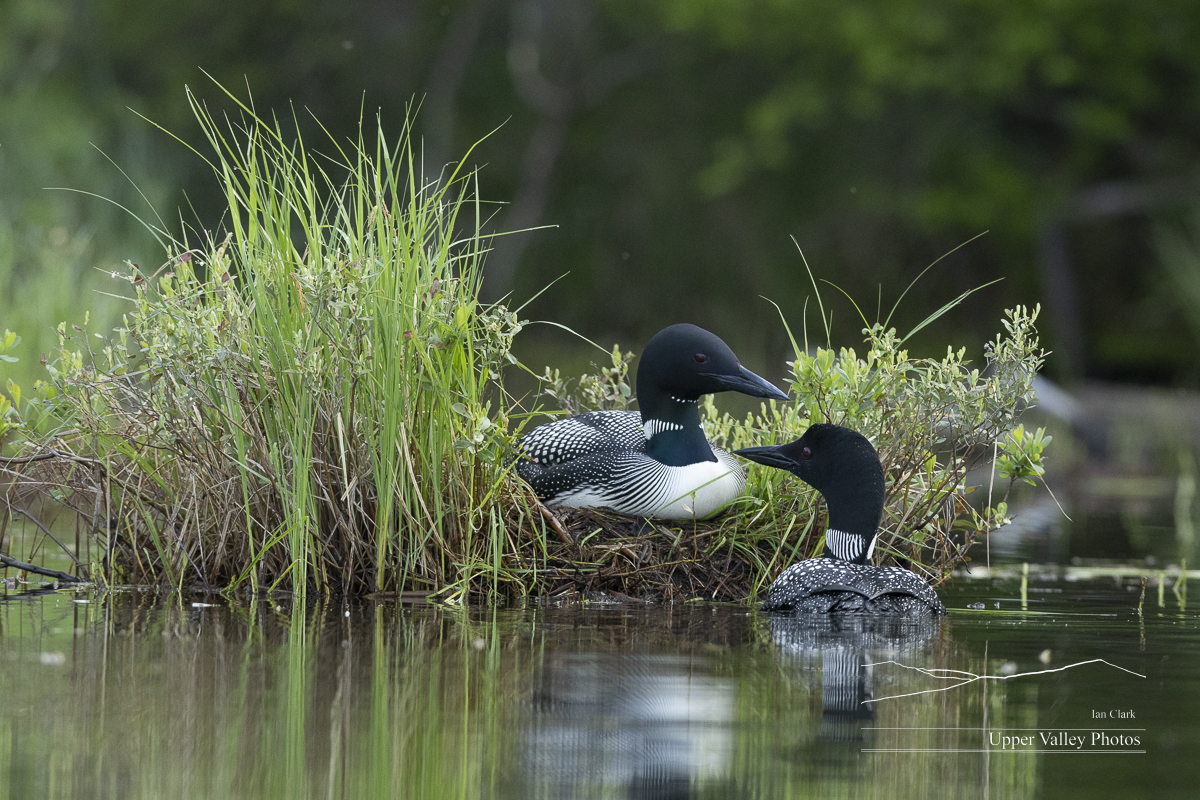
The road up to the Easton’s pond finally got some work and I was able to get up for a visit.
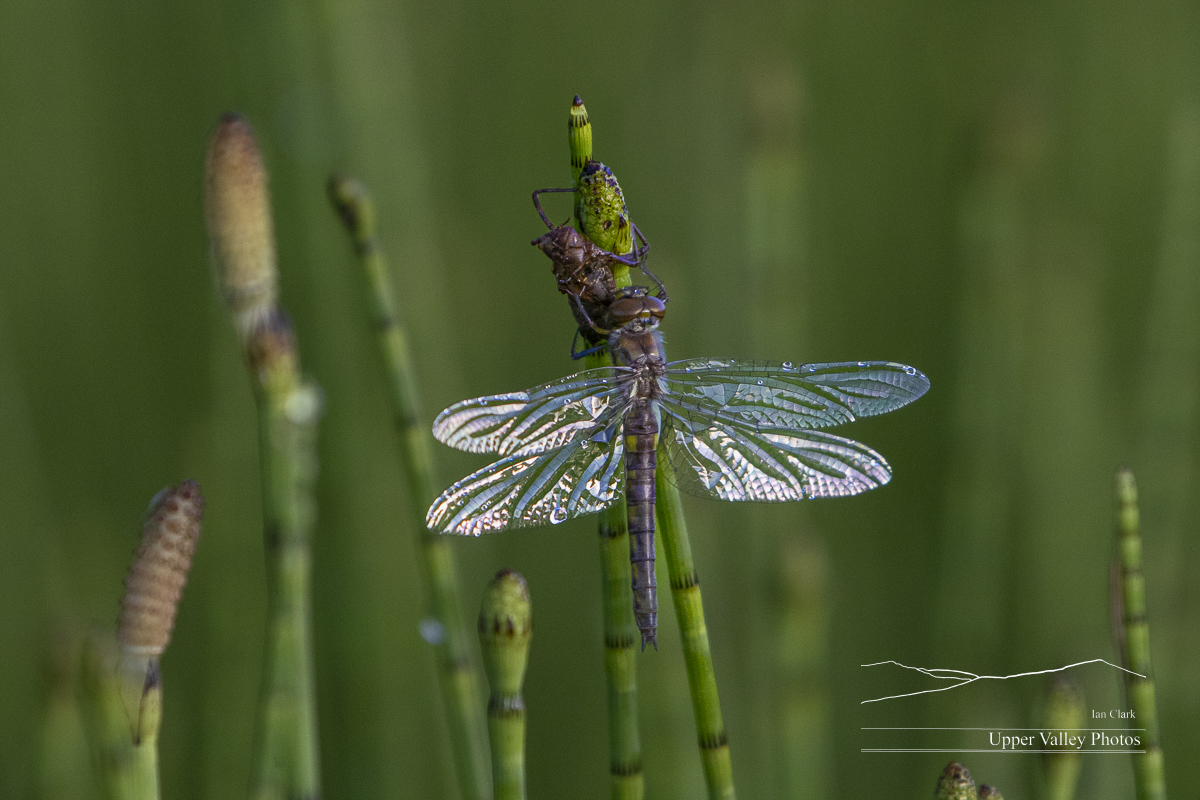
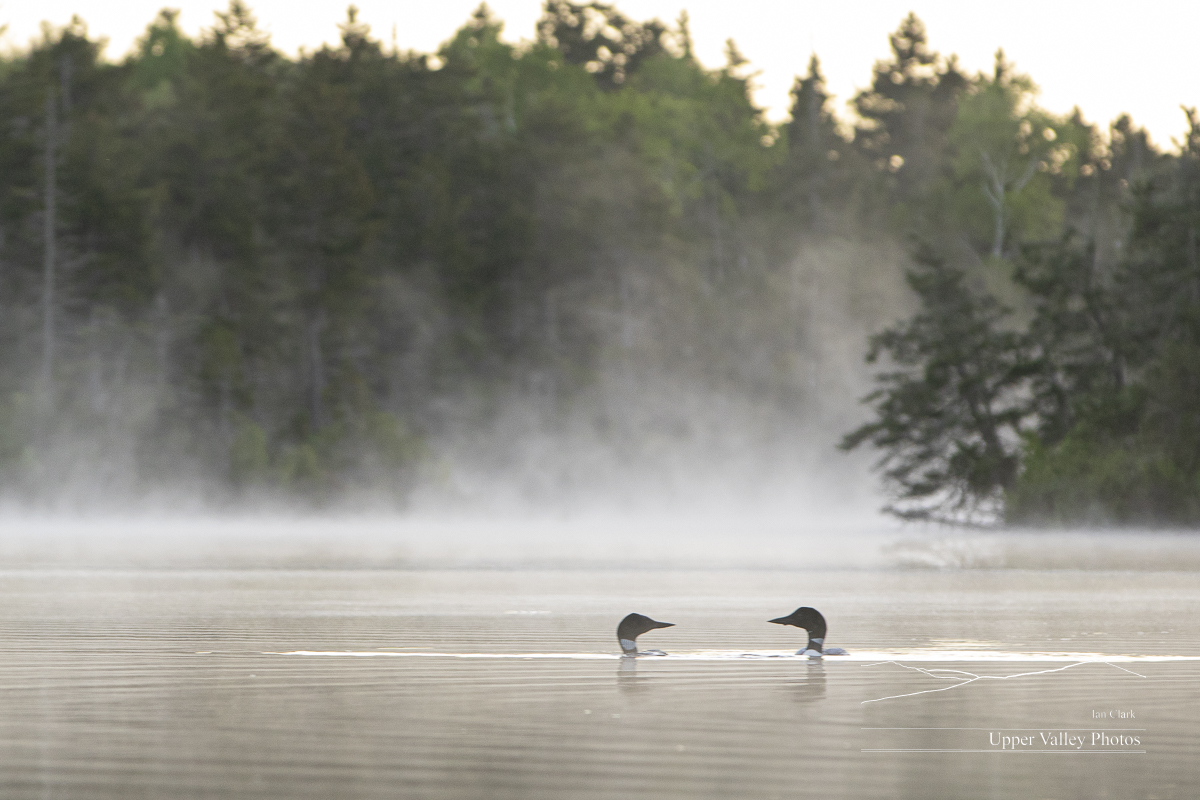
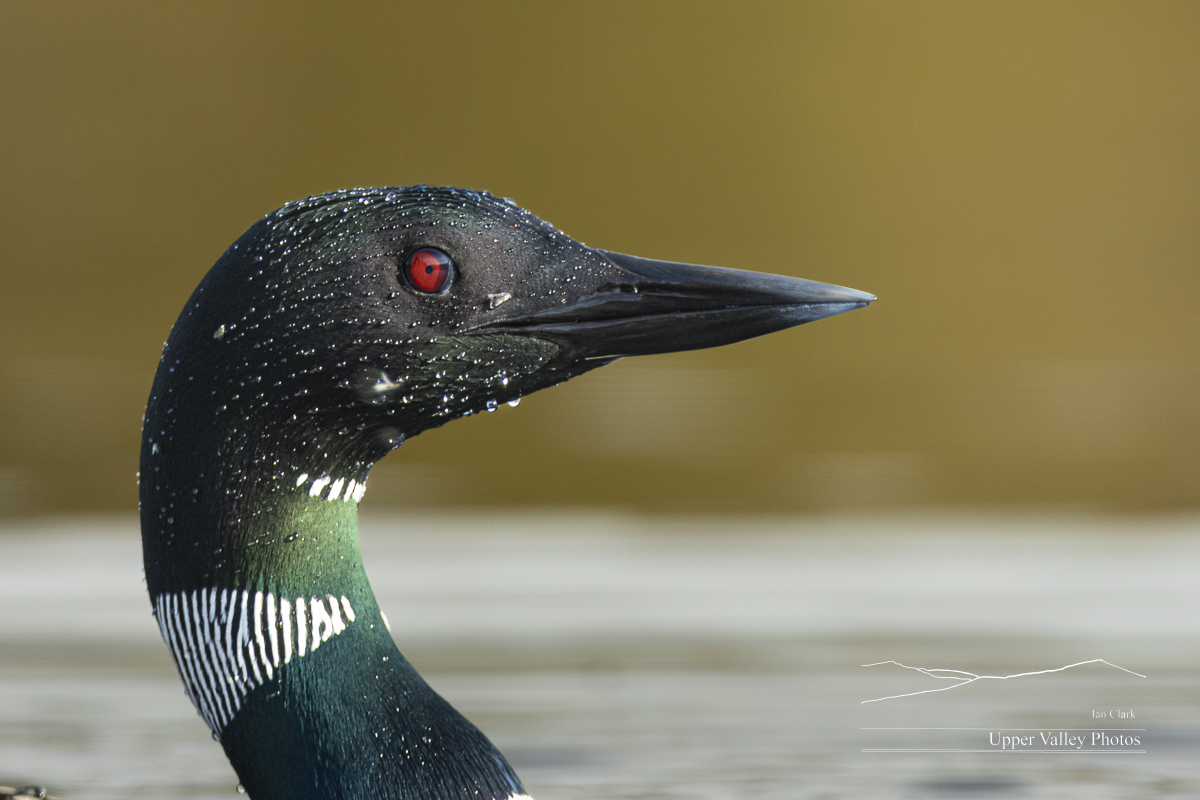
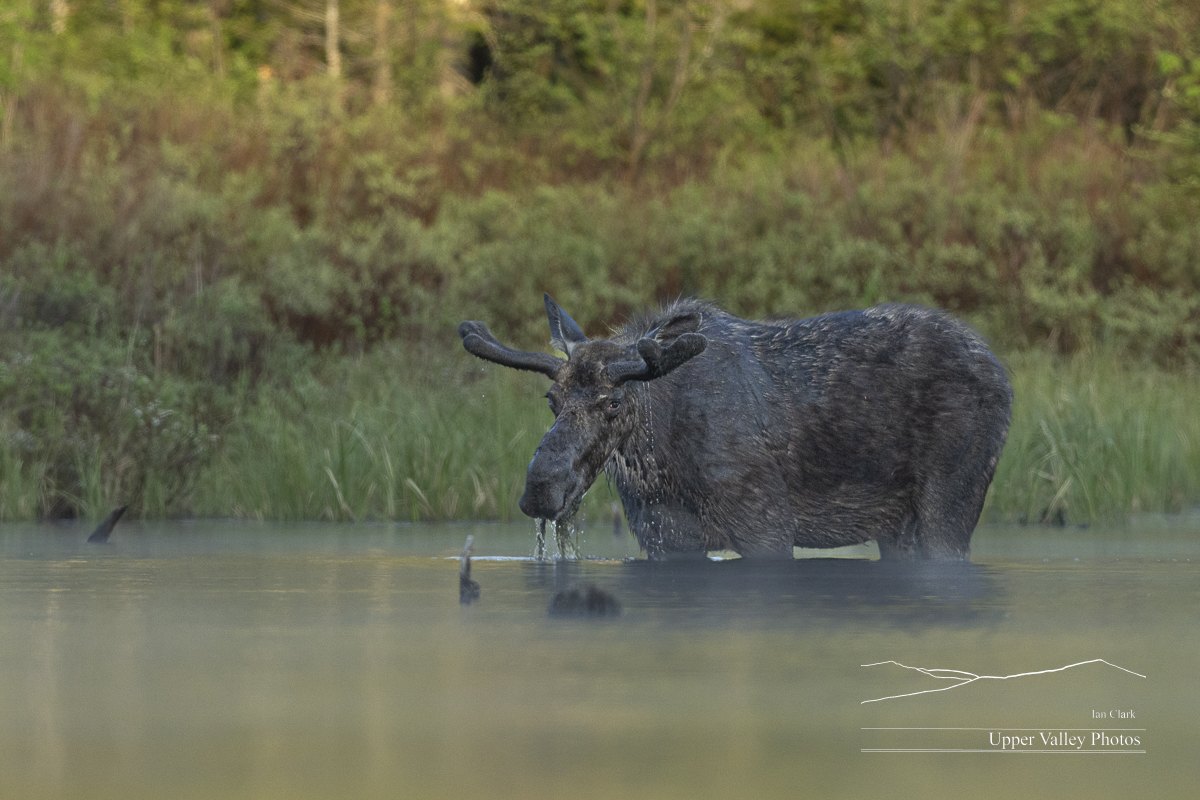
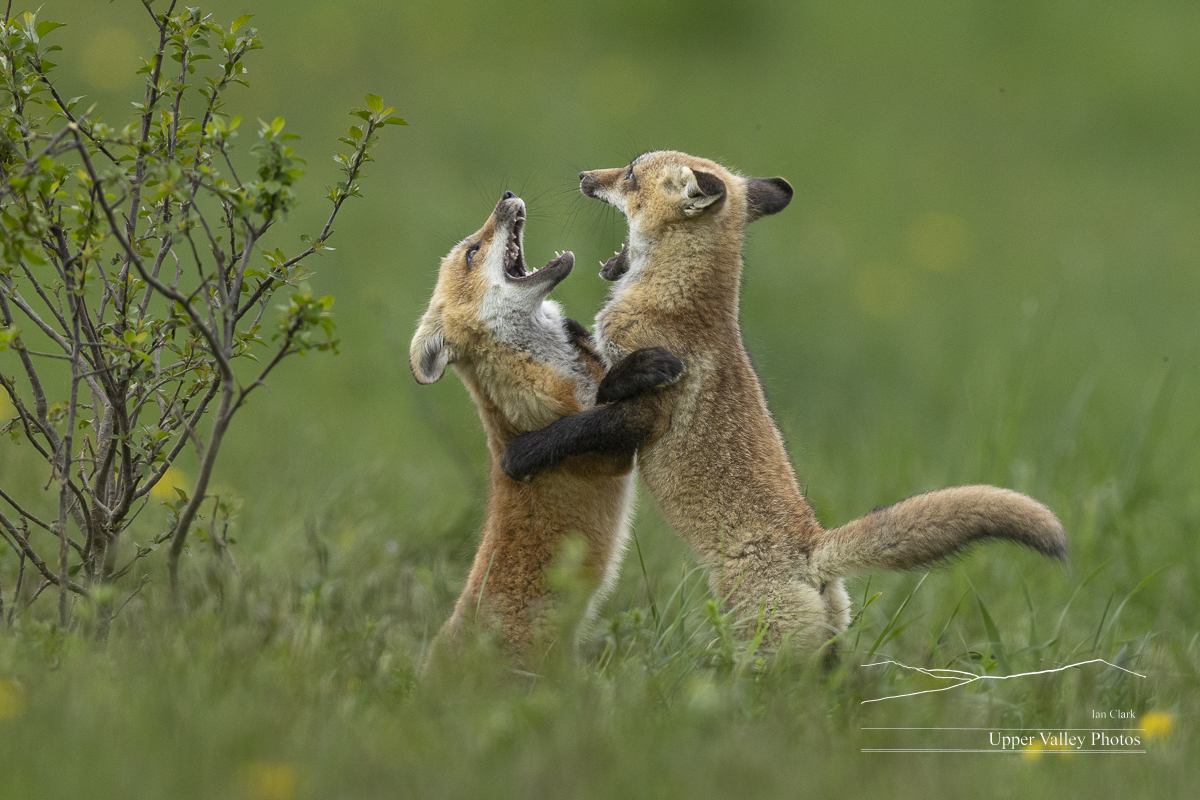
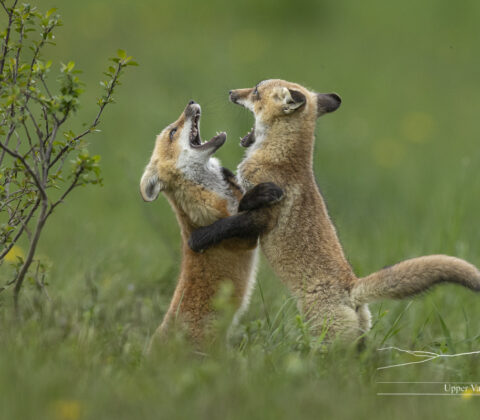
Red Fox Kits
Friends in West Newbury helped me locate two red fox dens. One has four kits, the other five. All of the foxes look healthy with beautiful coats. And fox kits are just darned cute.
I’ll be giving my slideshow, An Uncommon Look at the Common Loon, twice in the near future. The first will be at the Lyme, NH, School at 7:00 p.m. on Thursday, May 30th. The second presentation will be at the Tenney Memorial Library in Newbury, VT, at 2:00 p.m. on Sunday June 23.
I’ll have another post with updates on the loons and their neighbors shortly. The Westons are sitting on their nest, we know they have at least one egg. The Middletons are building their nest, should lay their eggs any day now. The road to the Eastons has been repaired, I’ll get up to visit them as soon as I can.
Finding a fox den is a treat. But it means long hours in a blind waiting for the action. When I found the first den, I set up a blind and several game cameras to let me know what was up. The first morning it wasn’t raining, I snuck into the blind before dawn. And waited. Eventually, the kits appeared.










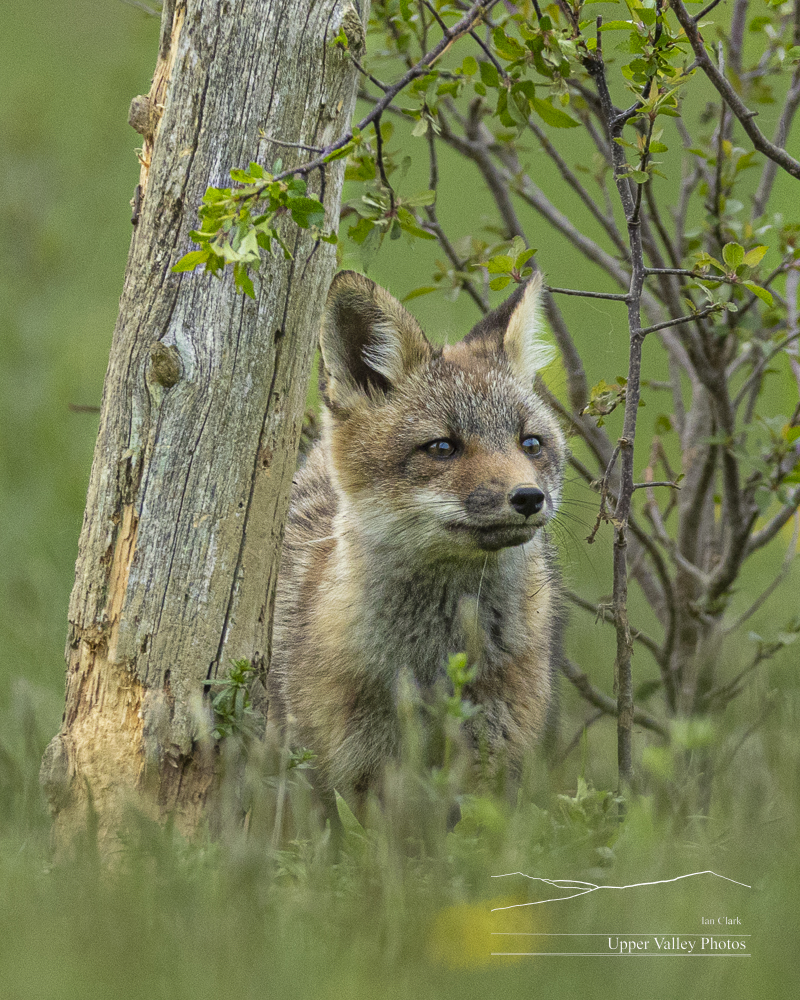
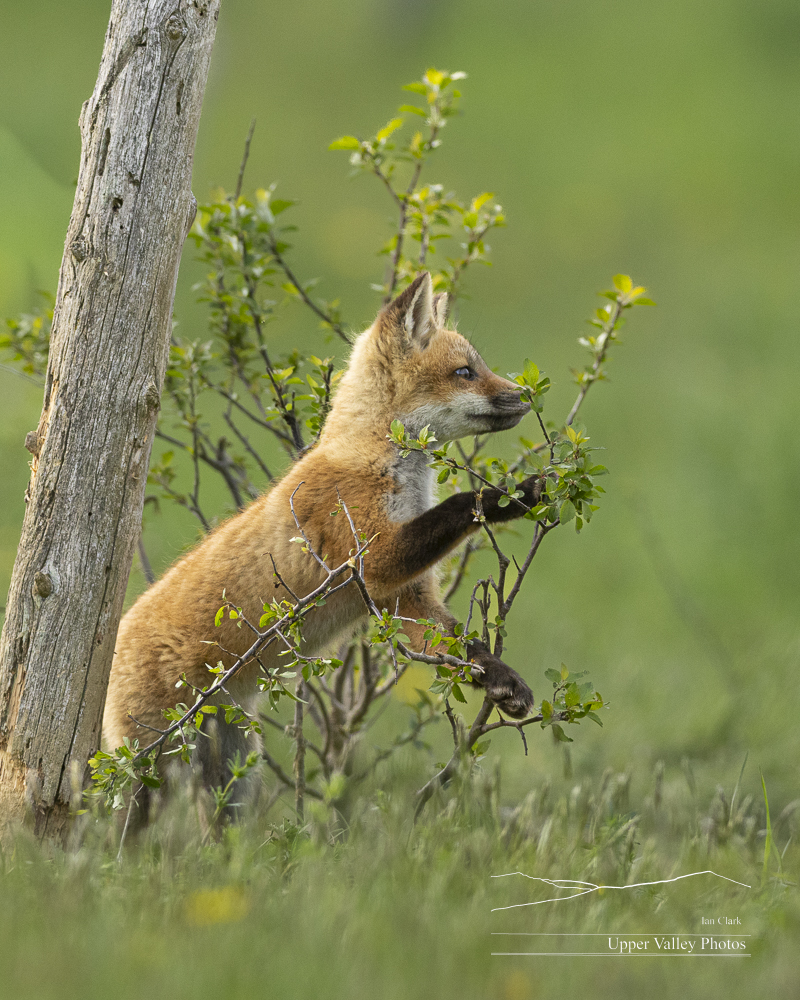
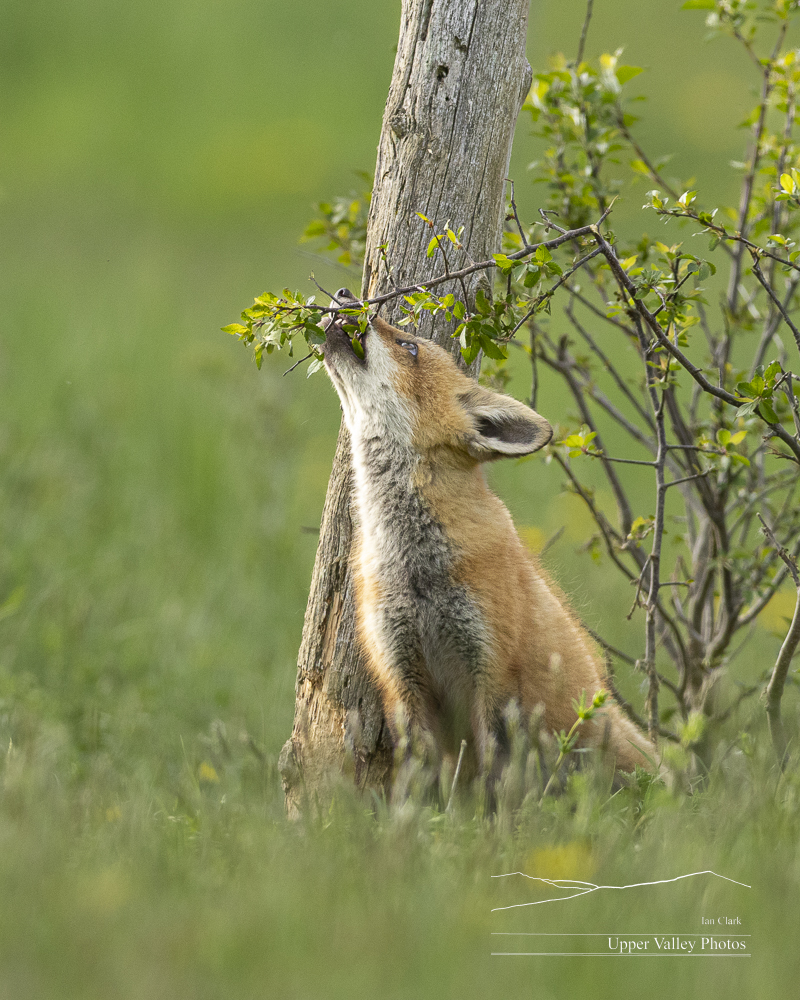
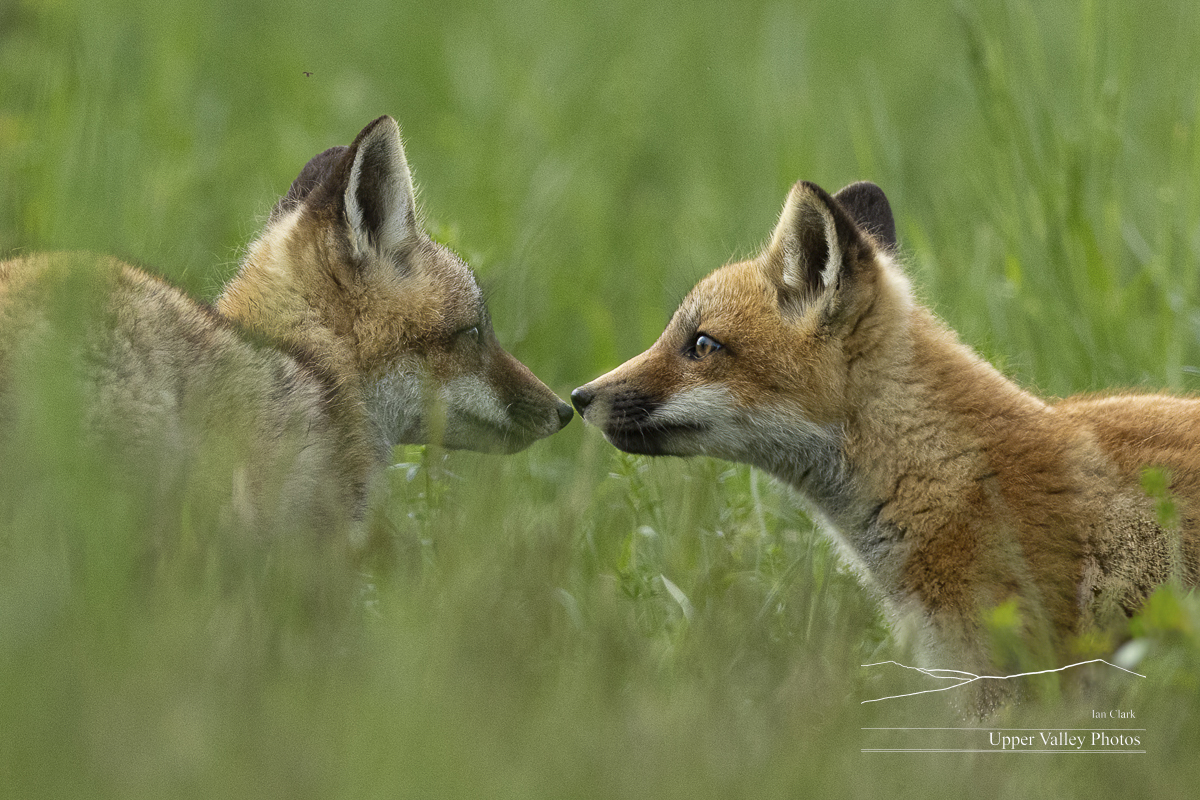



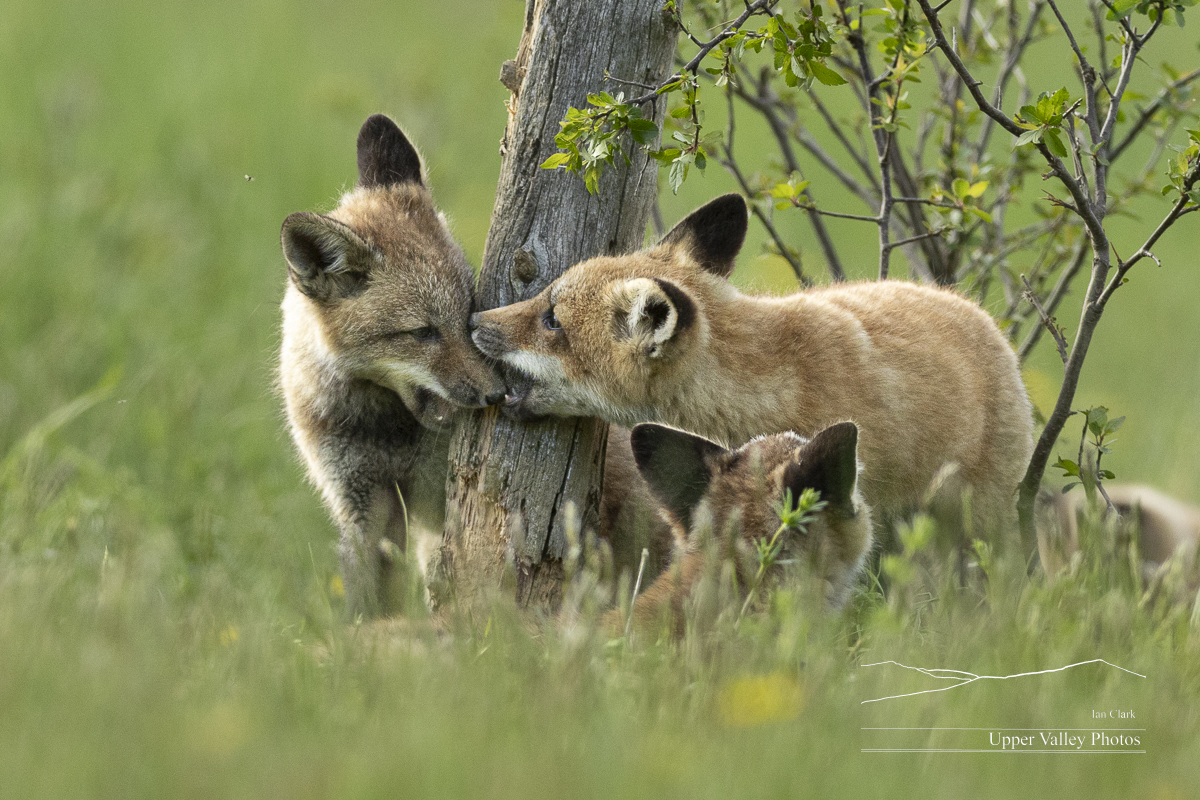
Check back soon for an update on the loons. Or you can sign up below to get an email when I add a new post. If you know someone who loves wildlife, please share the post with them.
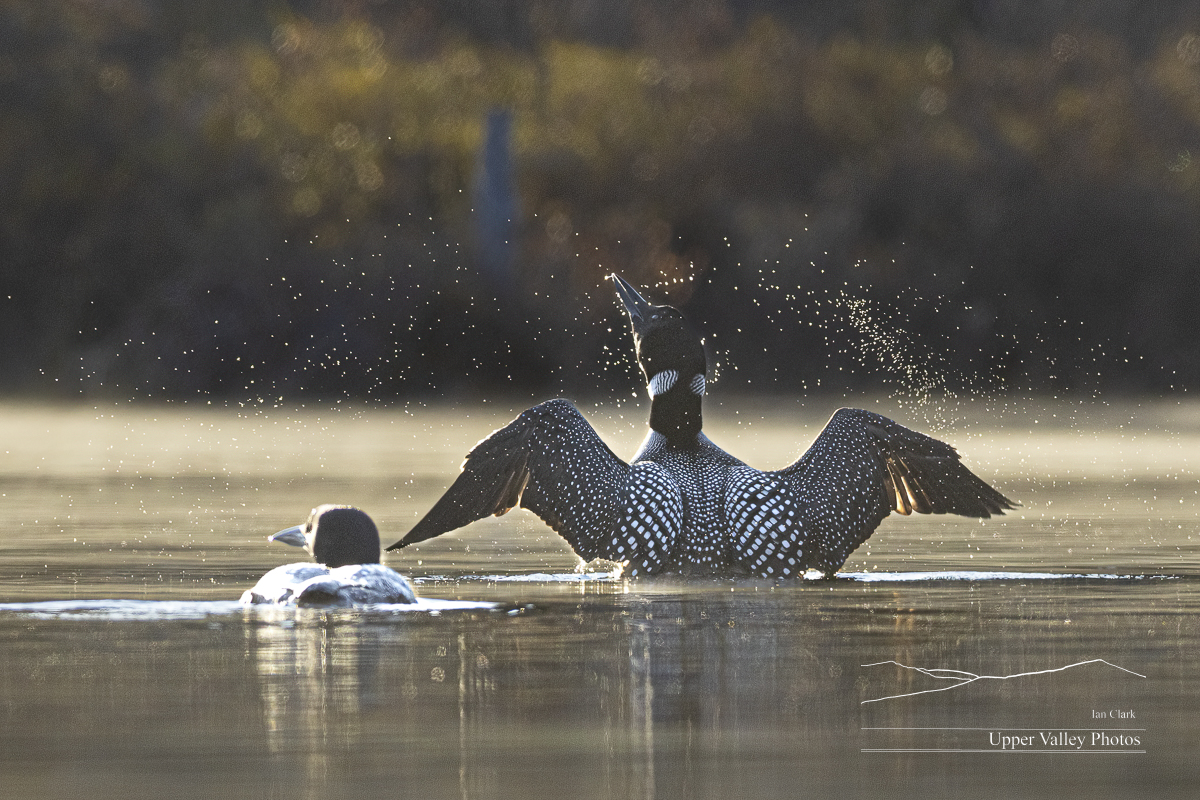

Catching Up with the Usual Suspects
I’ve been able to get out a few times to visit two of the loons’ ponds. The loons are out and about, along with the full cast of the usual suspects.
The Vermont Institute of Natural Science in Quechee is hosting my exhibit of loon prints through the end of July. There will be a reception where I show my slideshow, An Uncommon Look at the Common Loon, on Saturday, May 11 at 3 p.m. There are more details at https://vinsweb.org/event/artist-exhibition-ian-clark/ and https://www.facebook.com/events/454025283855444.
And, I’ll be presenting An Uncommon Loon again at the Lakes Region Art Association Gallery in Laconia, NH at 6 p.m. on May 20. The talk hasn’t been posted on their site yet, but details about the Association are at https://lraanh.org/.
Do you have critters around? While I do a lot of scouting on my own, tips for finding critters are always appreciated. I’m always looking for mammals, if you’ve got bobcats, coyotes, fishers or bears that show up more than once, I’d love a chance to photograph them. I’m also looking for owls, woodpecker nests and scarlet tanagers along with rarer species that may not visit feeders regularly. Places where I can come and go early in the morning or late in the evening without disturbing you or the critters are best.
And now, the critters. Here’s a skunk that doesn’t seem to appreciate my trail camera.
Last Friday, I caught up with some volunteers from the Loon Preservation Committee (LPC)
as they deployed their loon nesting platform on Post Pond in Lyme, NH.
Nesting platforms have been a huge success in helping restore the loon population. The LPC put out their first platform in 1977. Since then LPC volunteers and staff have floated loon nesting rafts on New Hampshire lakes 1,685 times – not including this year. Nesting loon pairs have used these rafts 917 times, and hatched 976 chicks on the platforms – an incredible one in four chicks hatched in New Hampshire. You can learn more about LPC at www.loon.org – and check out their loon cam watching a nest in the Lakes Region at https://loon.org/looncam/. Sign up for their newsletter to keep up with New Hampshire’s loons. Vermonter’s loons get assistance from the Vermont Center for Ecostudies, check out their site, https://vtecostudies.org/
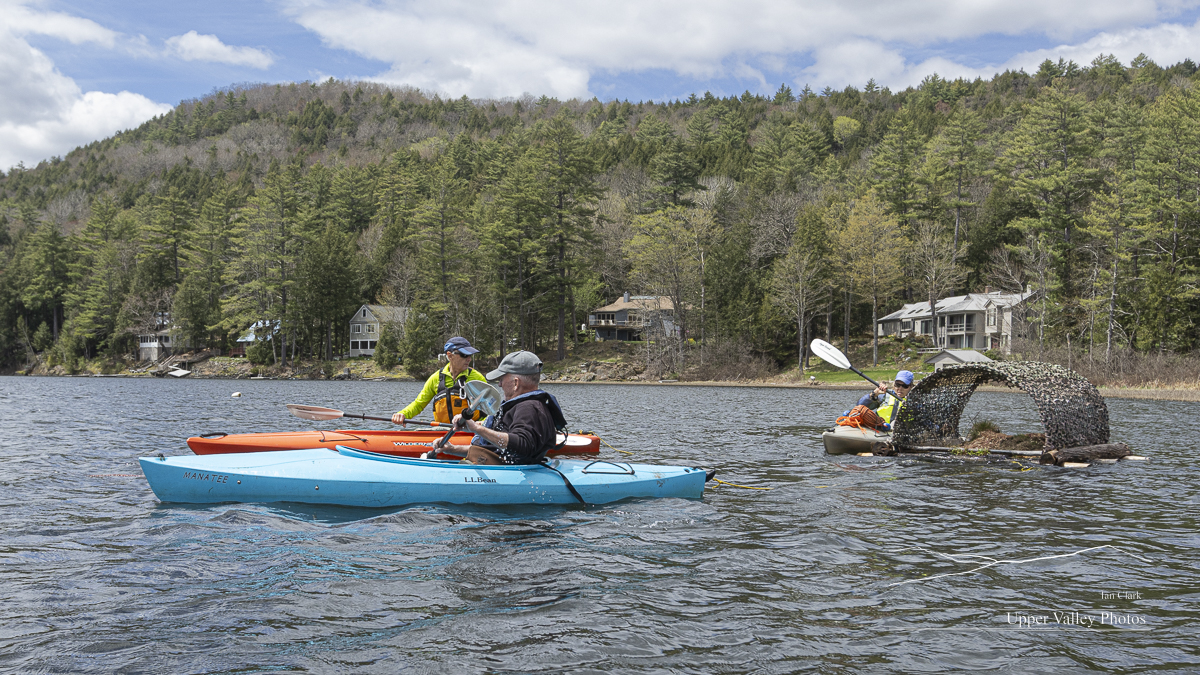

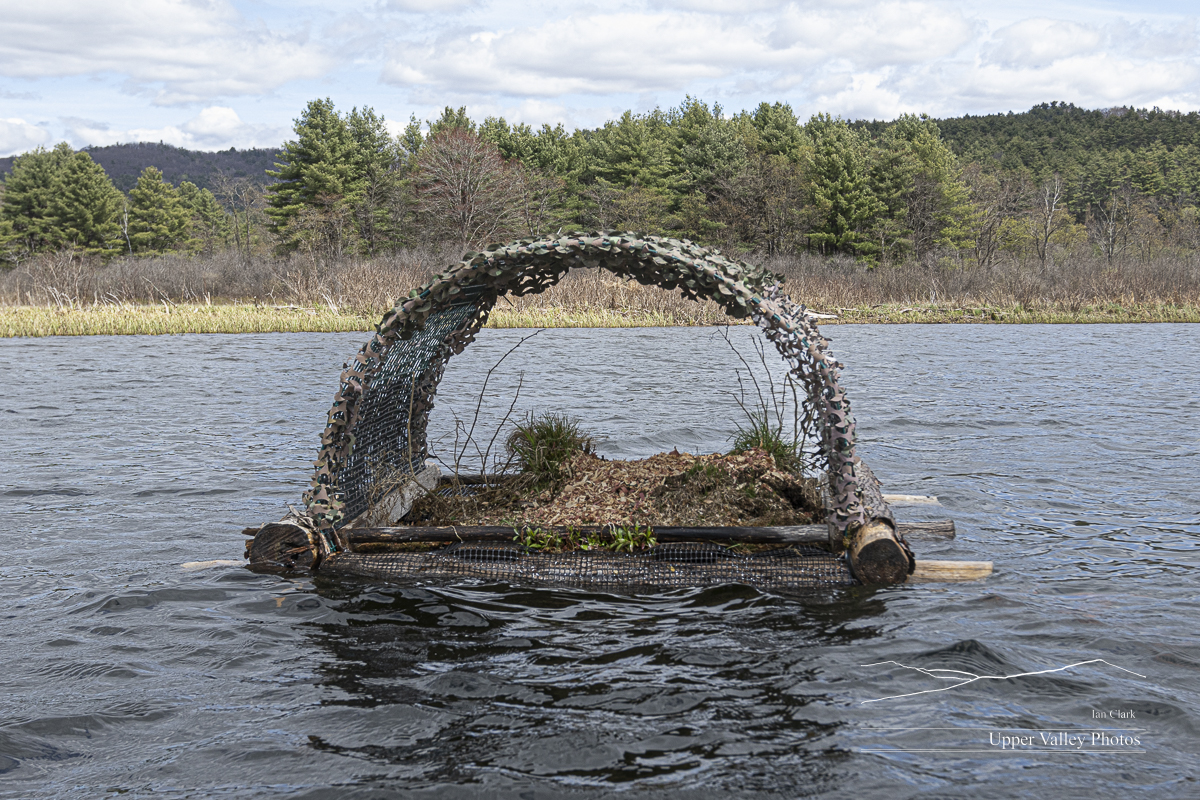
On April 23, I made it out to check in with the Westons. (For new readers, to give the loons some privacy, I named the loons on the pond to my east the Eastons. The loons to my west are the Westons, and the pond in the middle hosts the Middletons.)

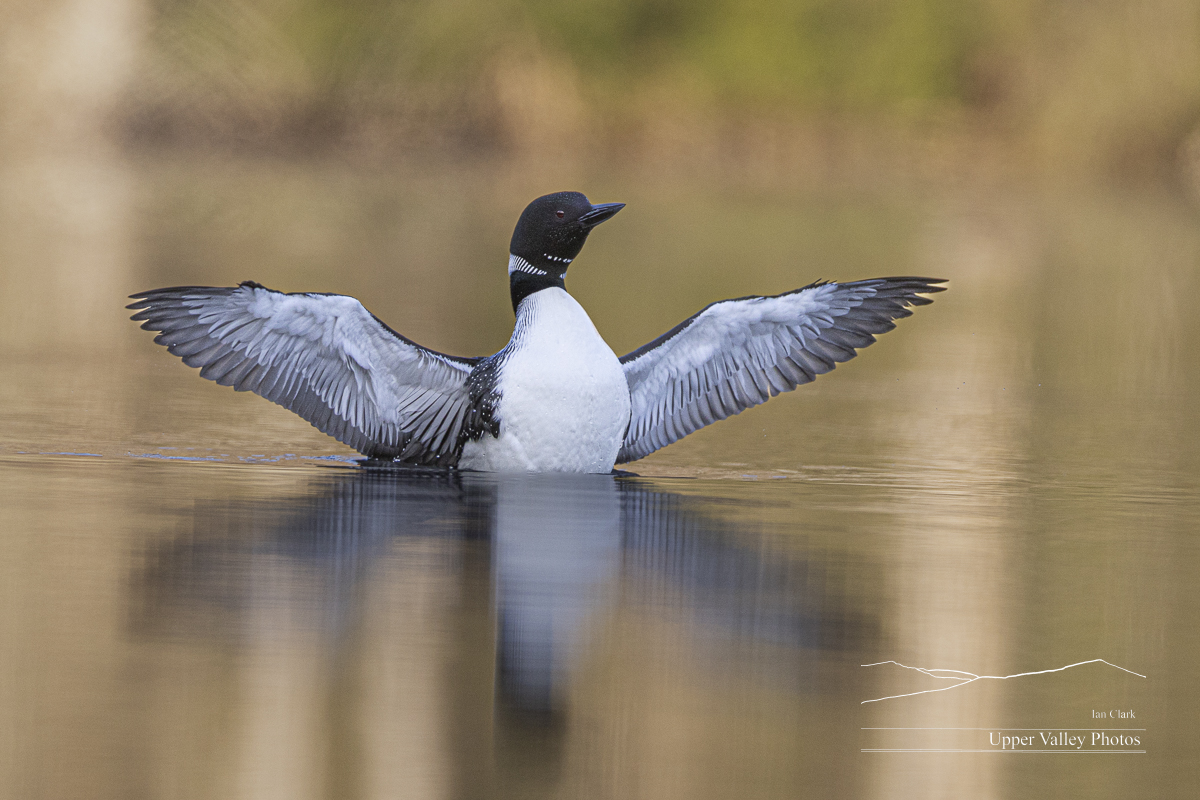
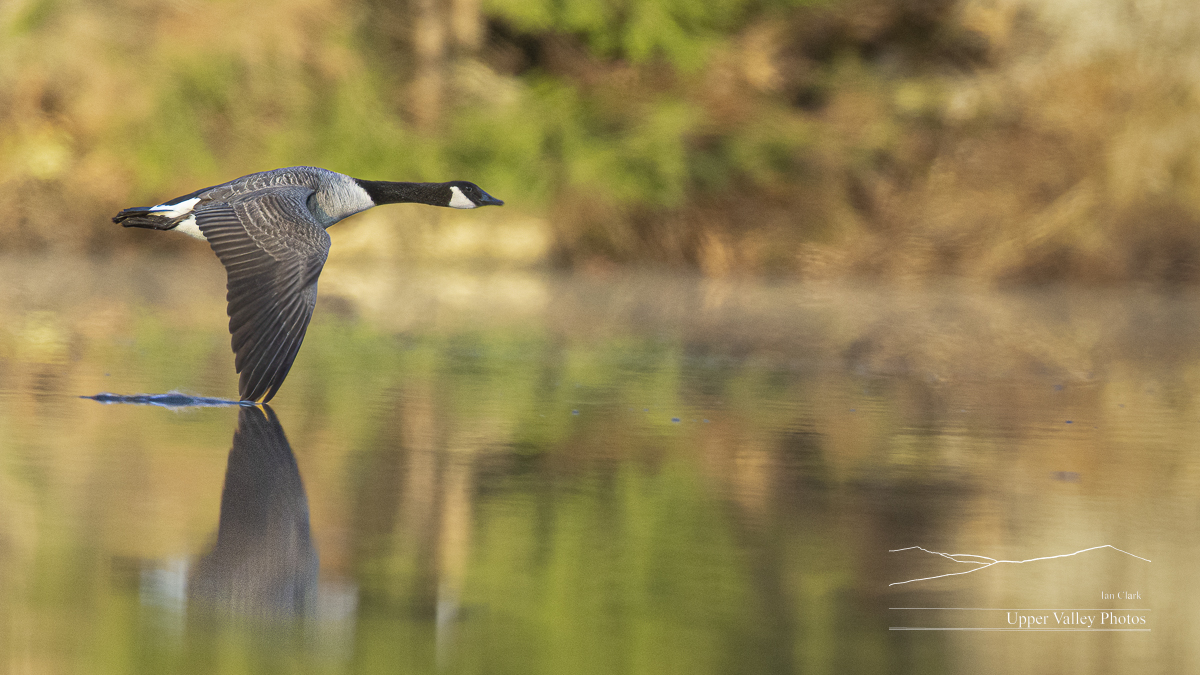
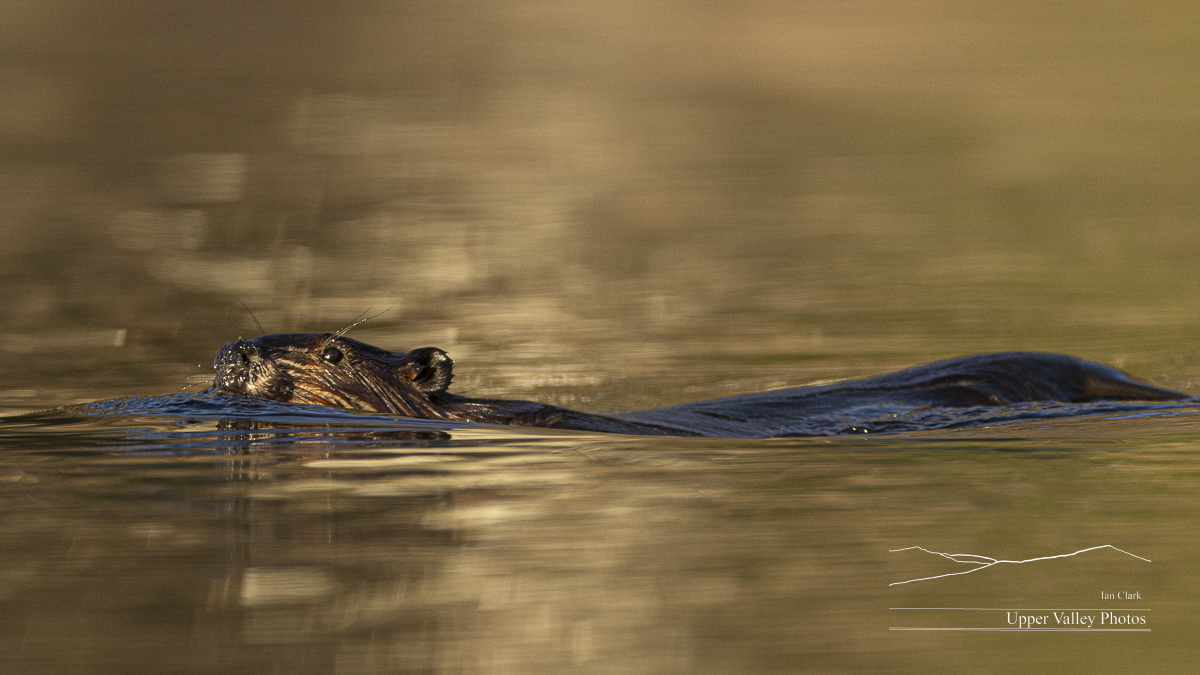
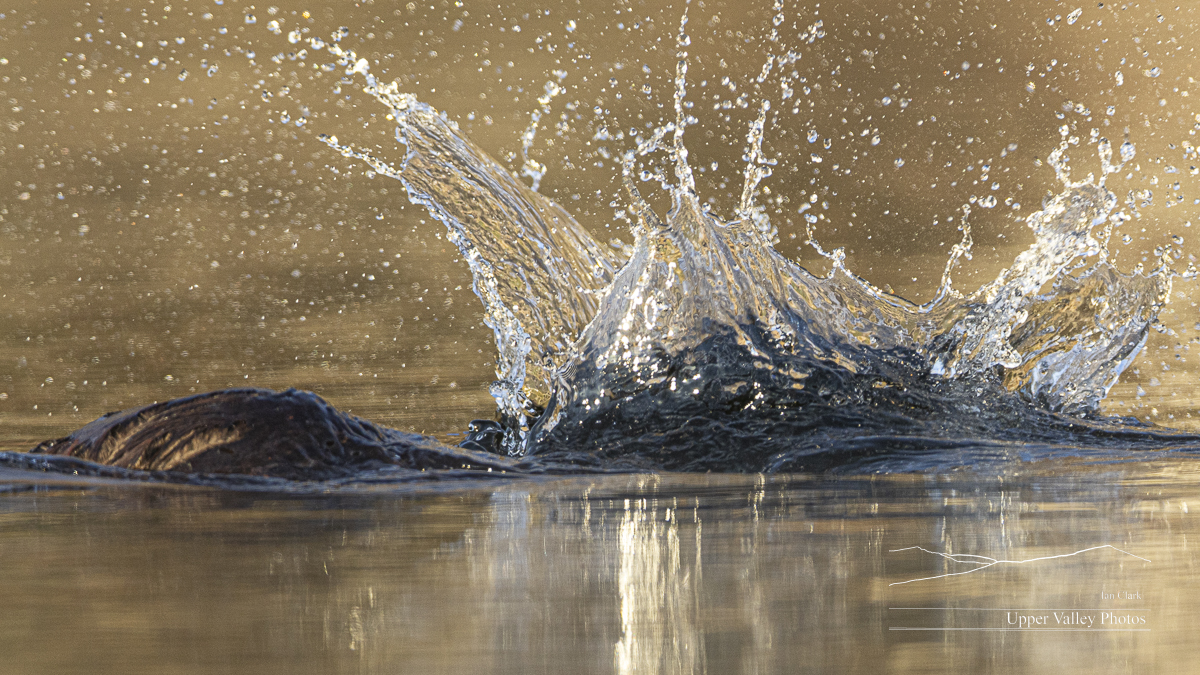

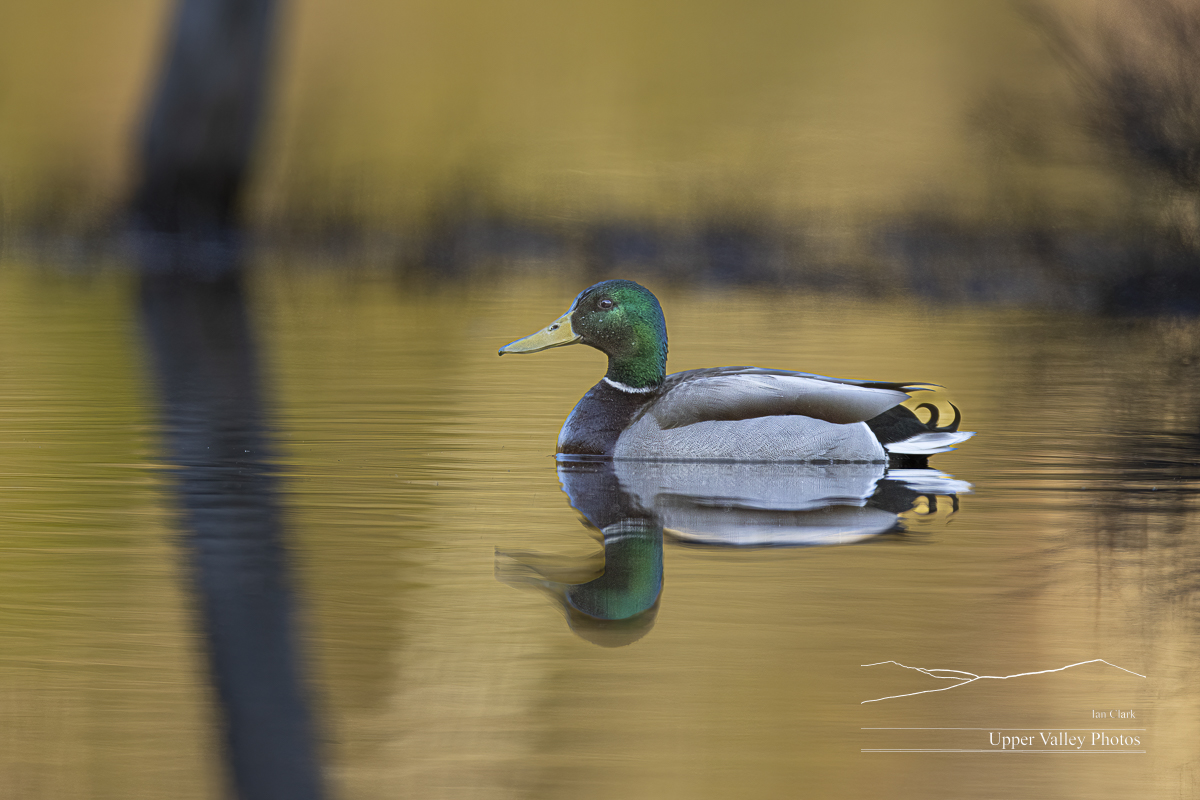
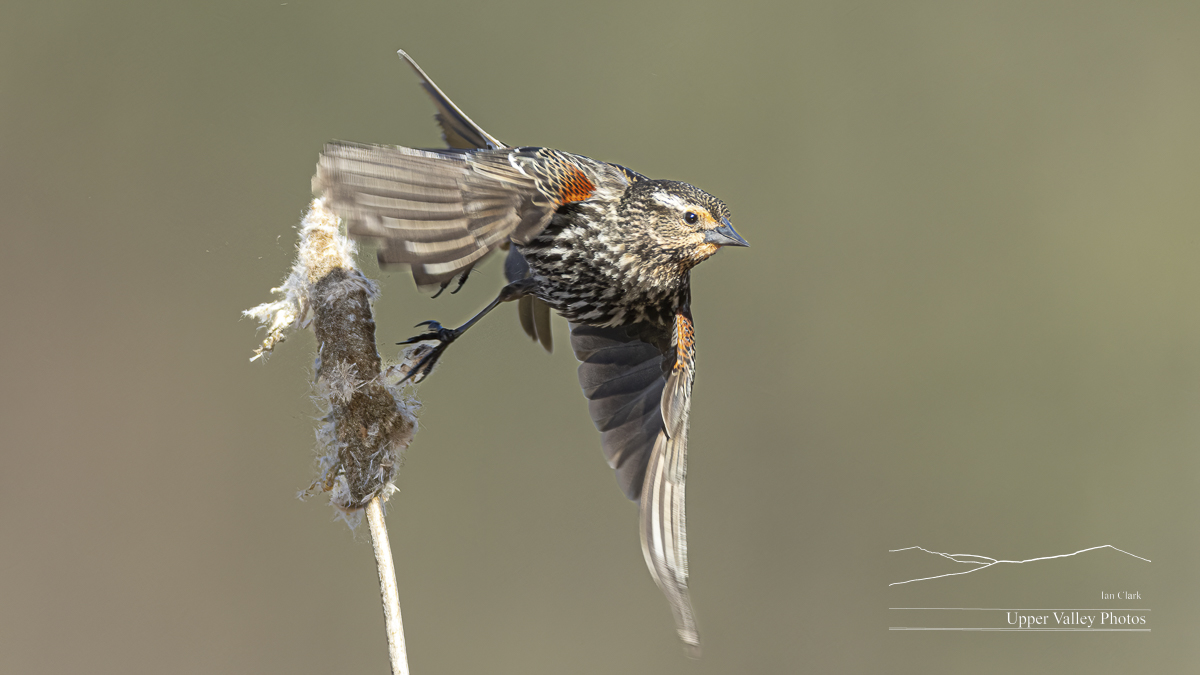
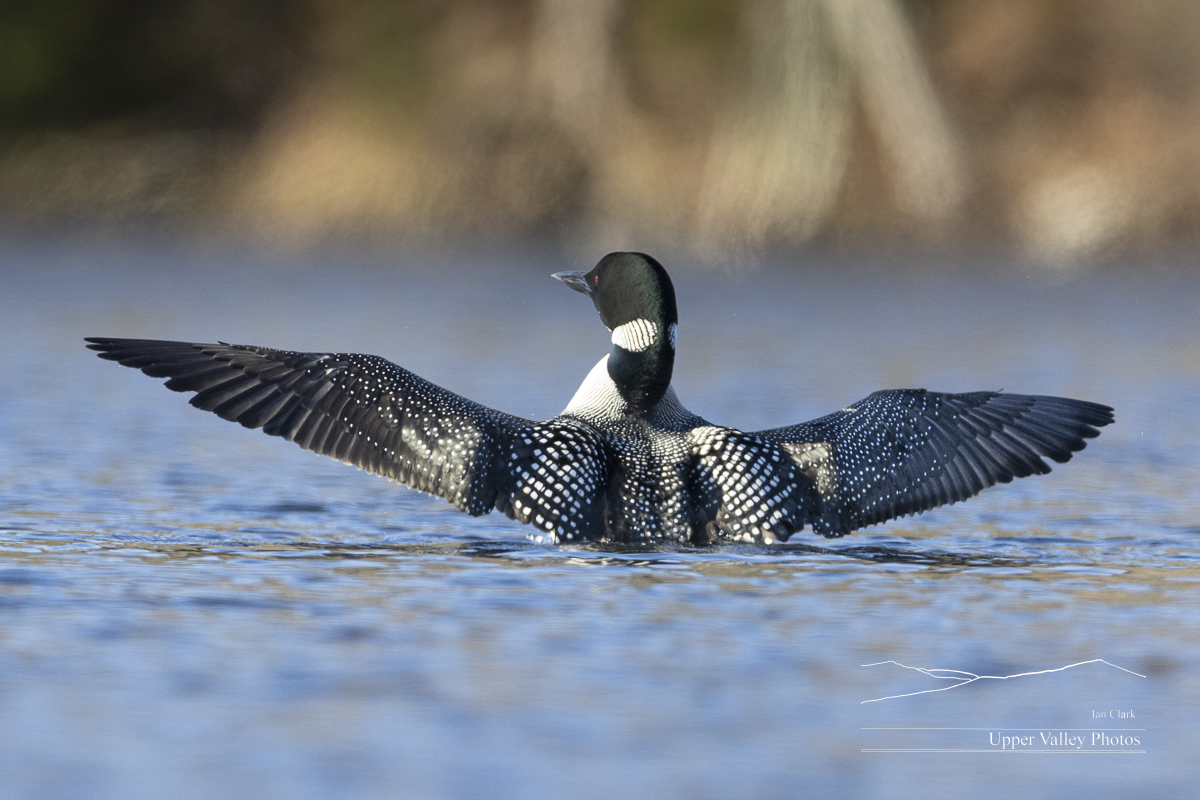
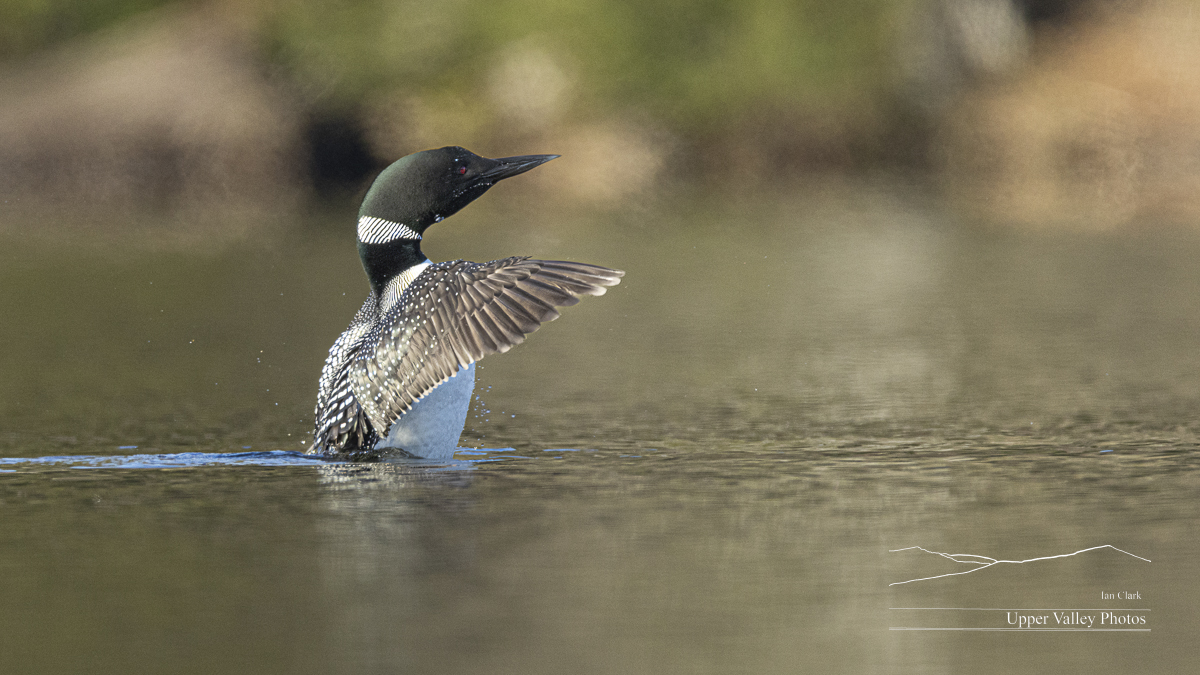
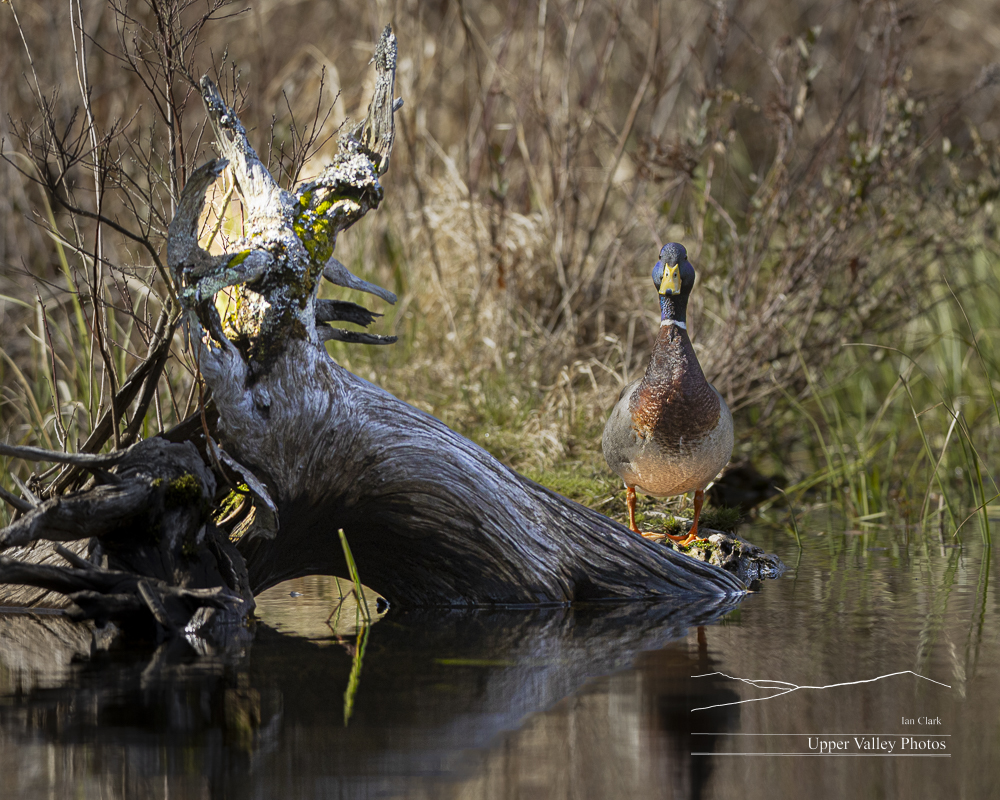
Last Friday, I visited the Middletons. They were busy foraging, apparently having to work for dinner. They were making long dives and covering lots of territory underwater. I went to see who else might be around the pond.

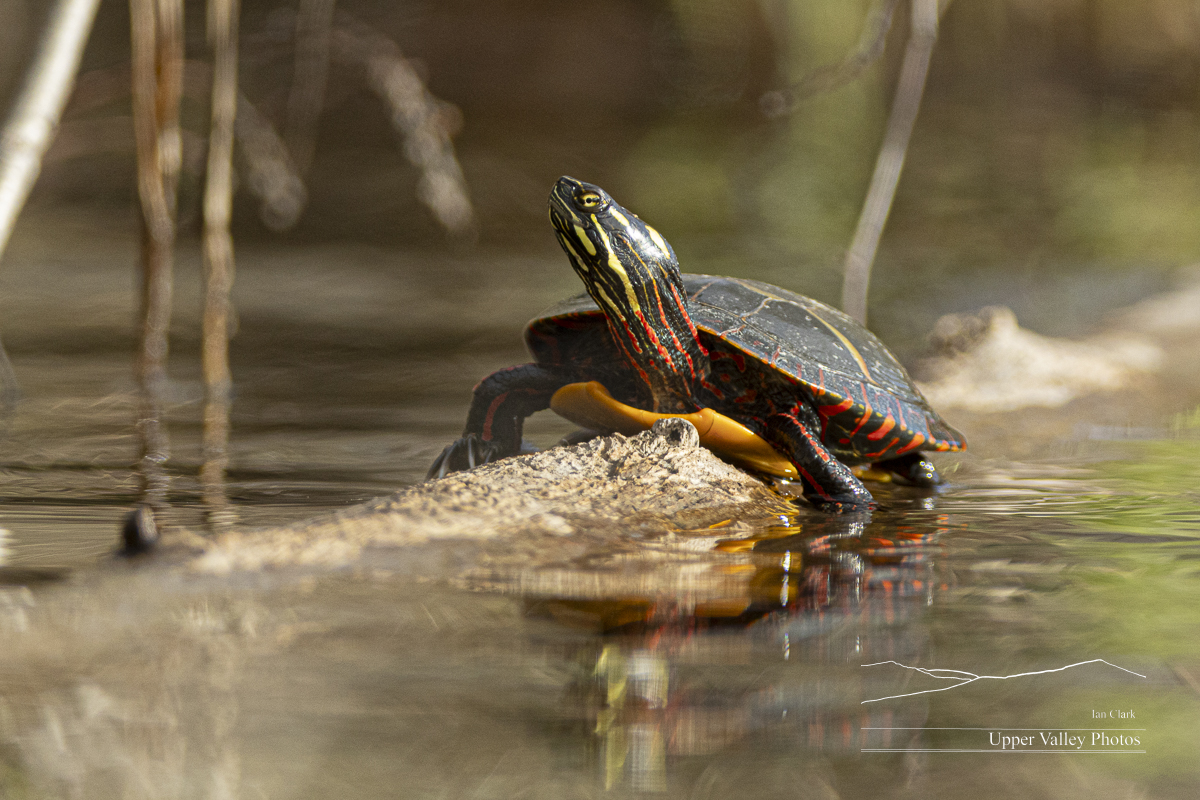
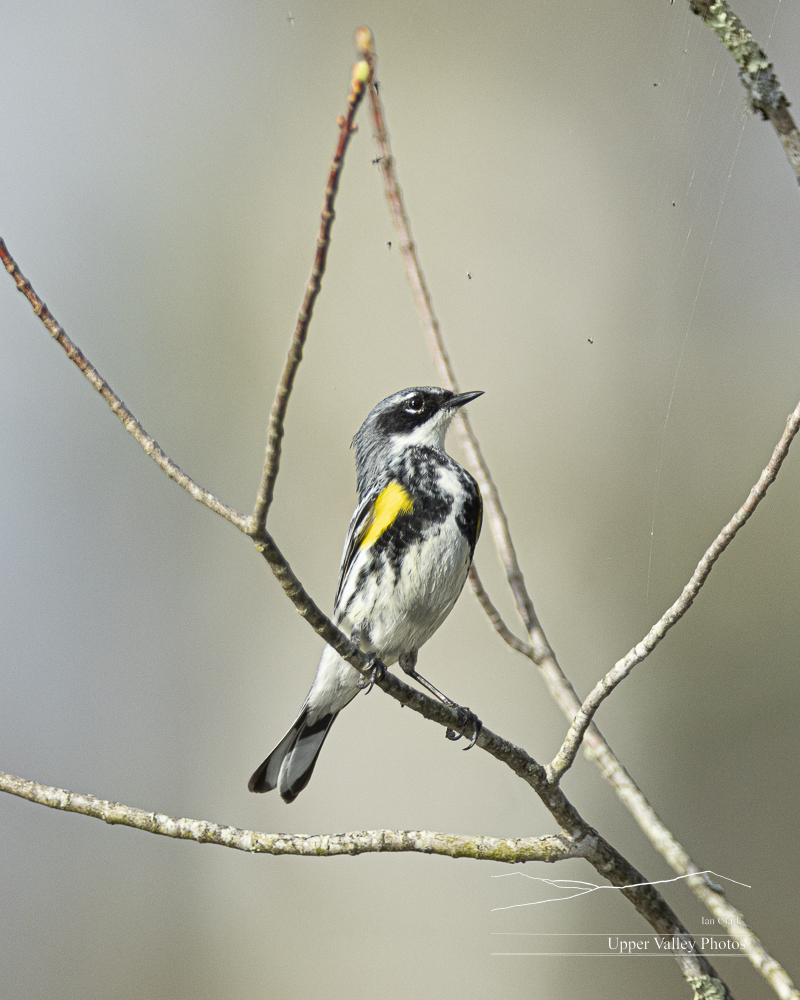
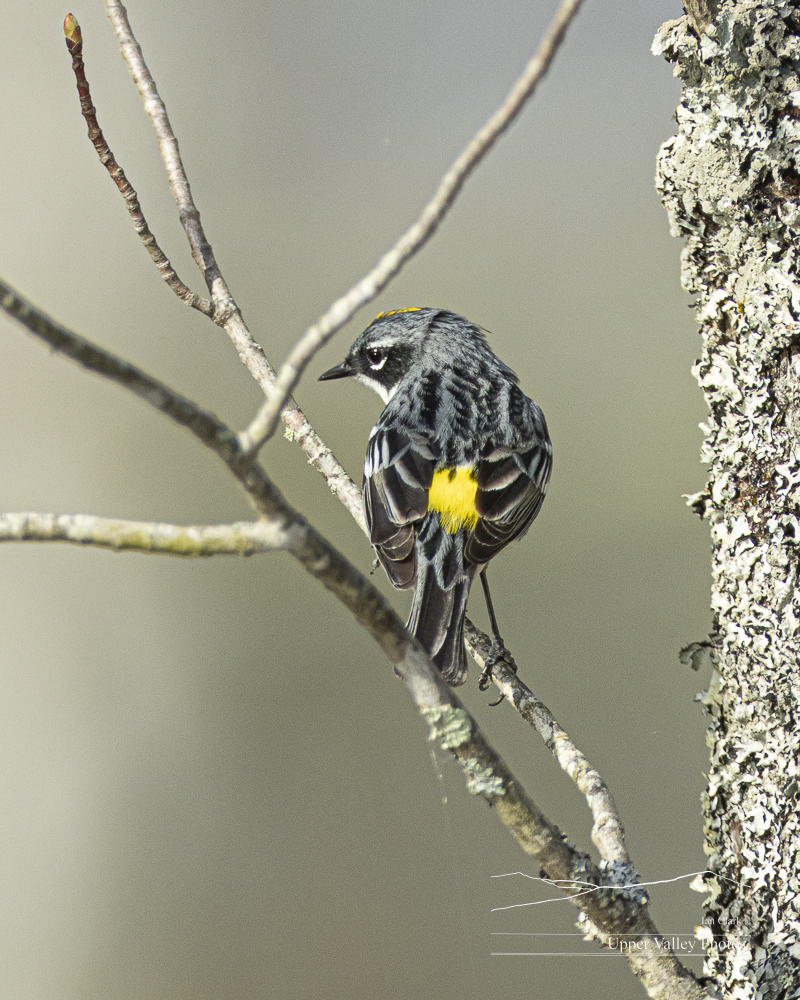
There were several pine warblers in the flock. I’ve yet to get a good photo of one. They tend to forage deep in the brush, making it hard to get an unobstructed view of them. It turns out one of my skills is photographing branches on which pine warblers were very recently perched. (My other talent is stalking heron-shaped sticks.)
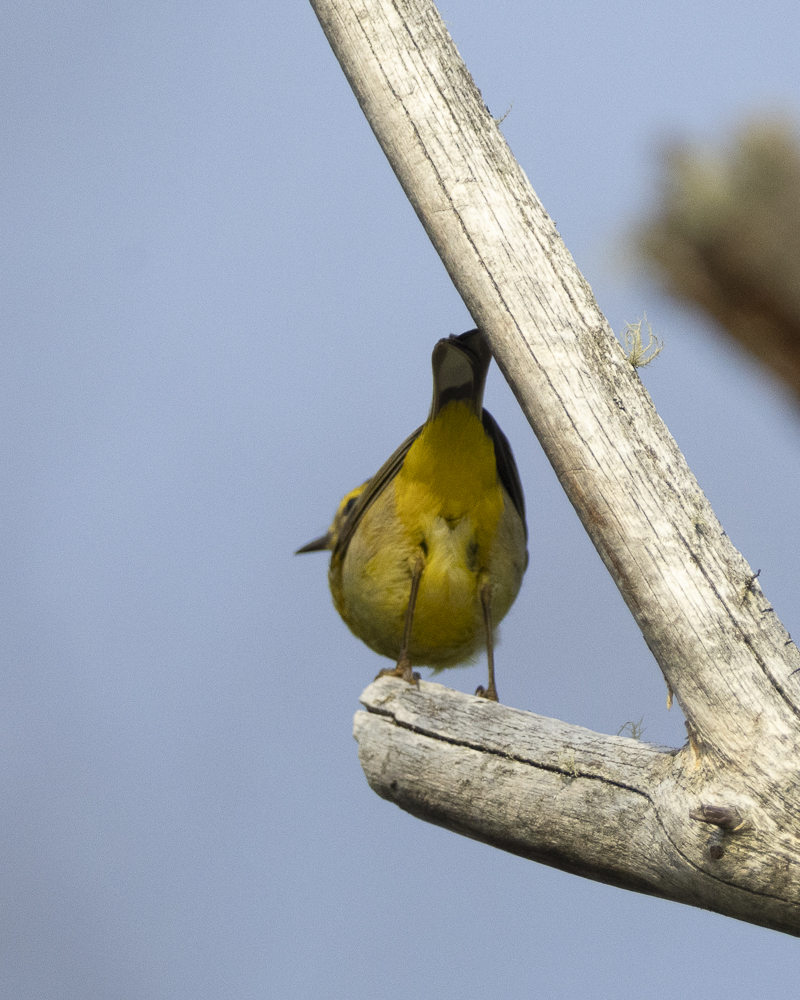

Saturday morning found me visiting the Westons once again. The weather went south rapidly and I left when it started raining.
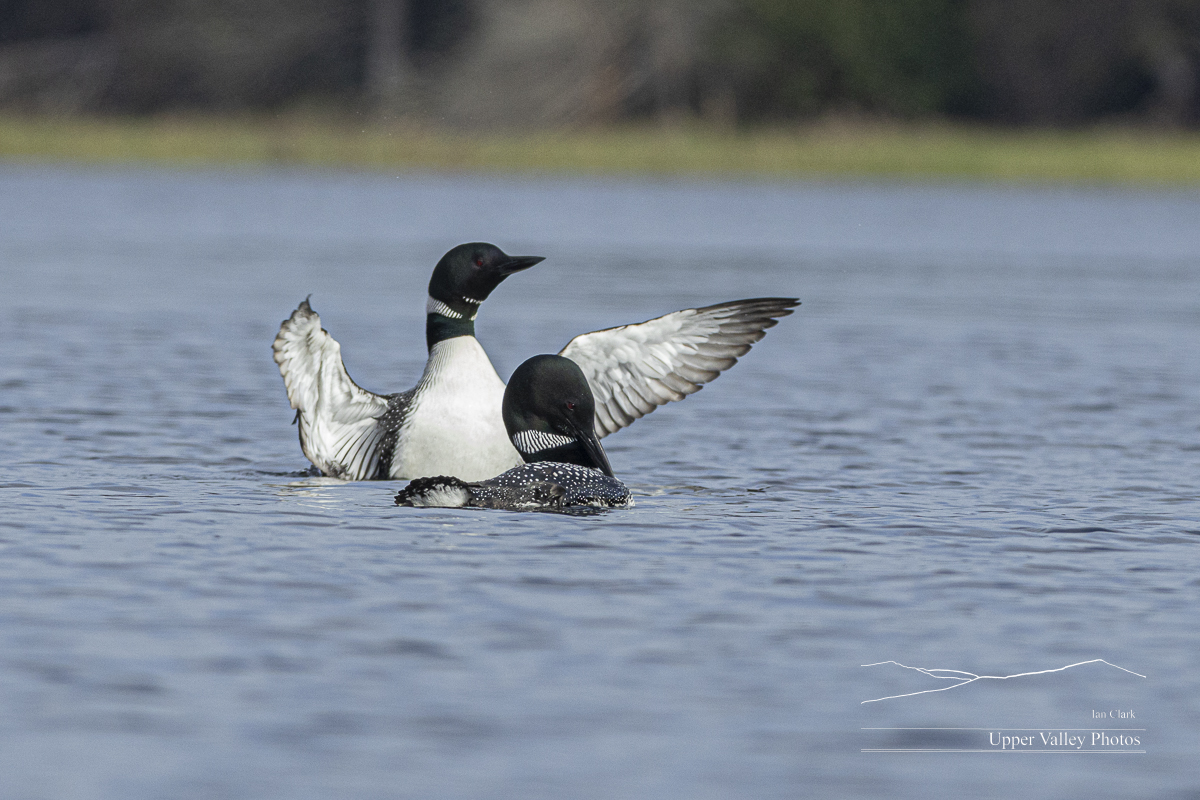
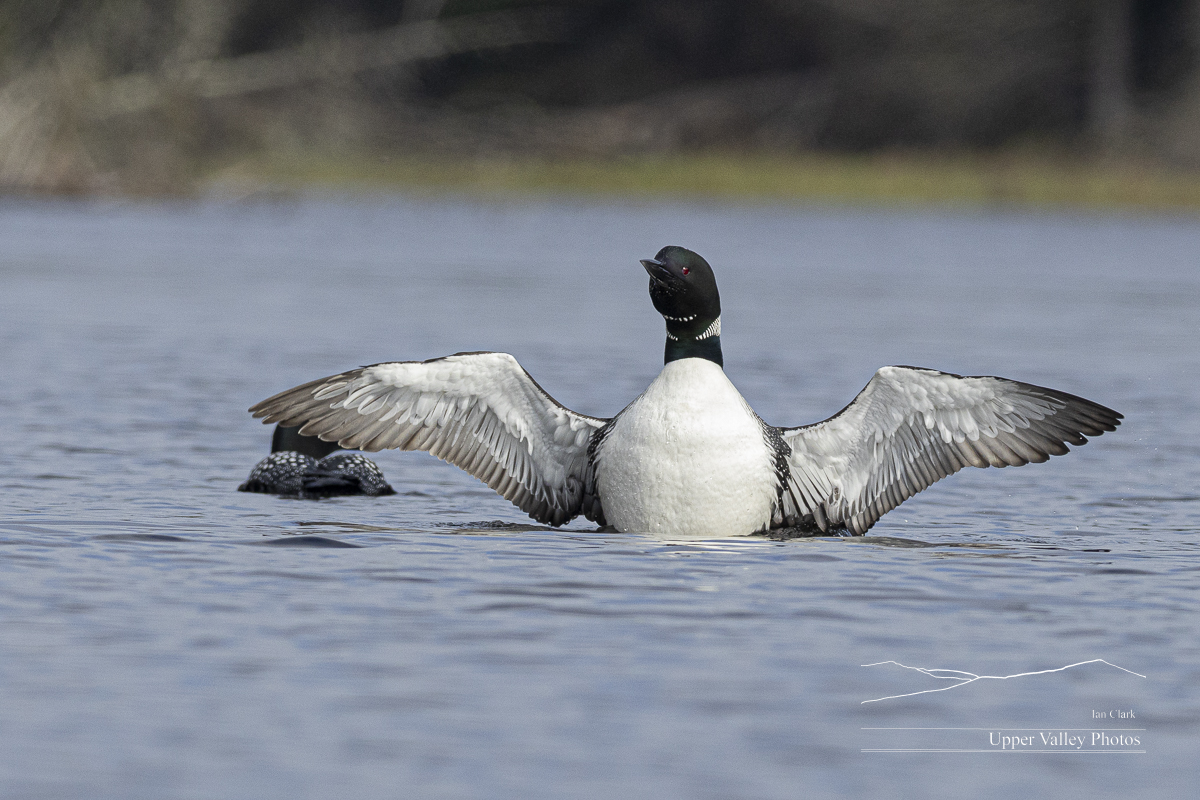
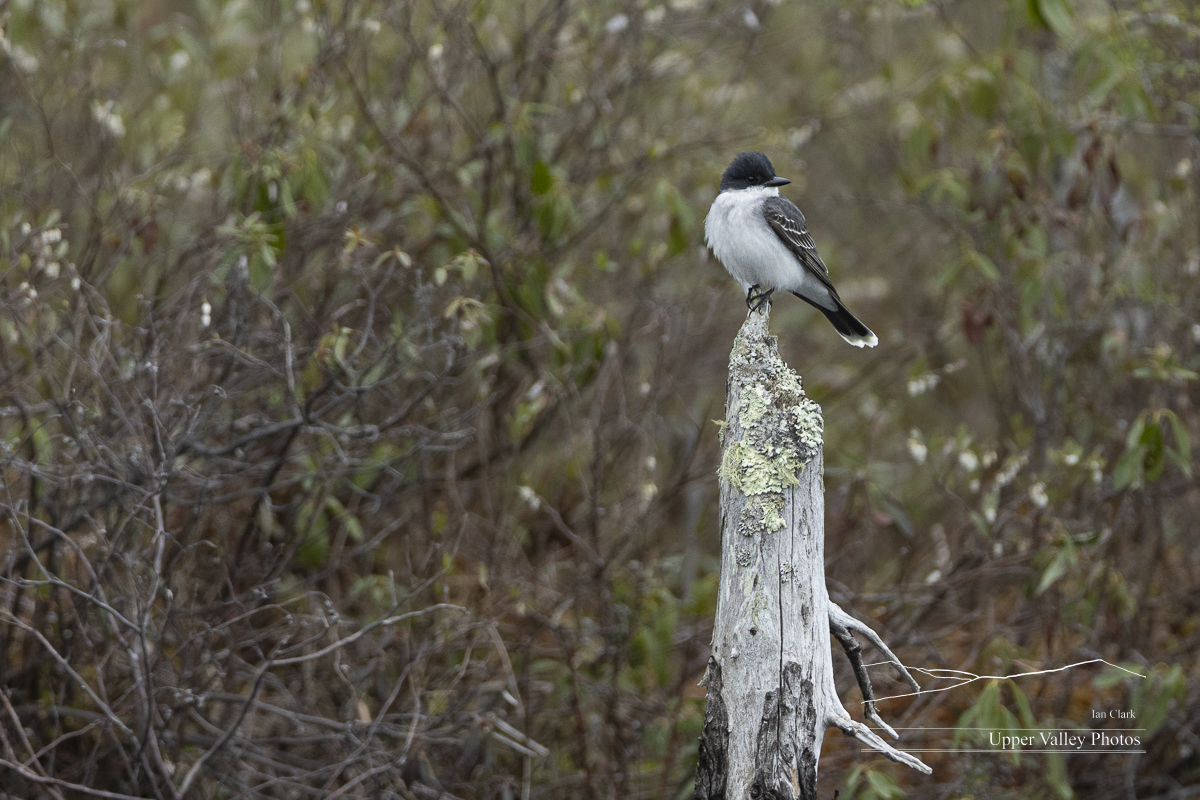
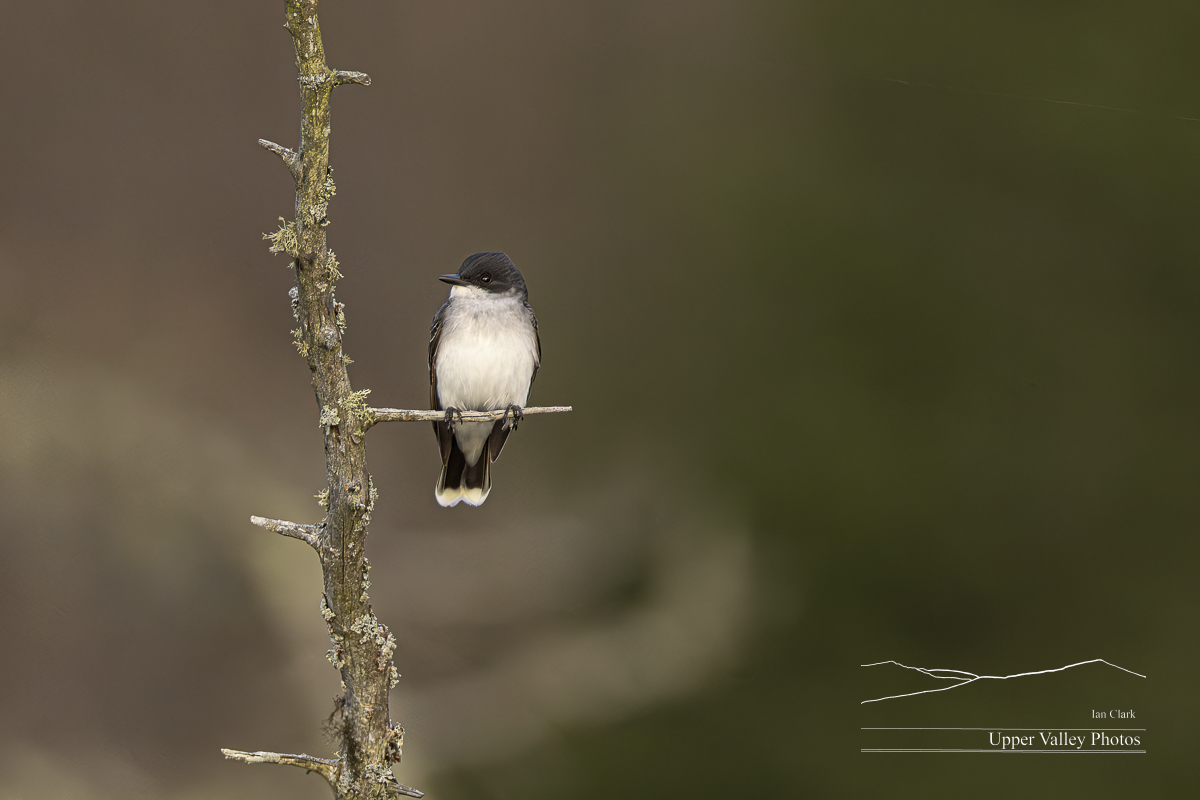
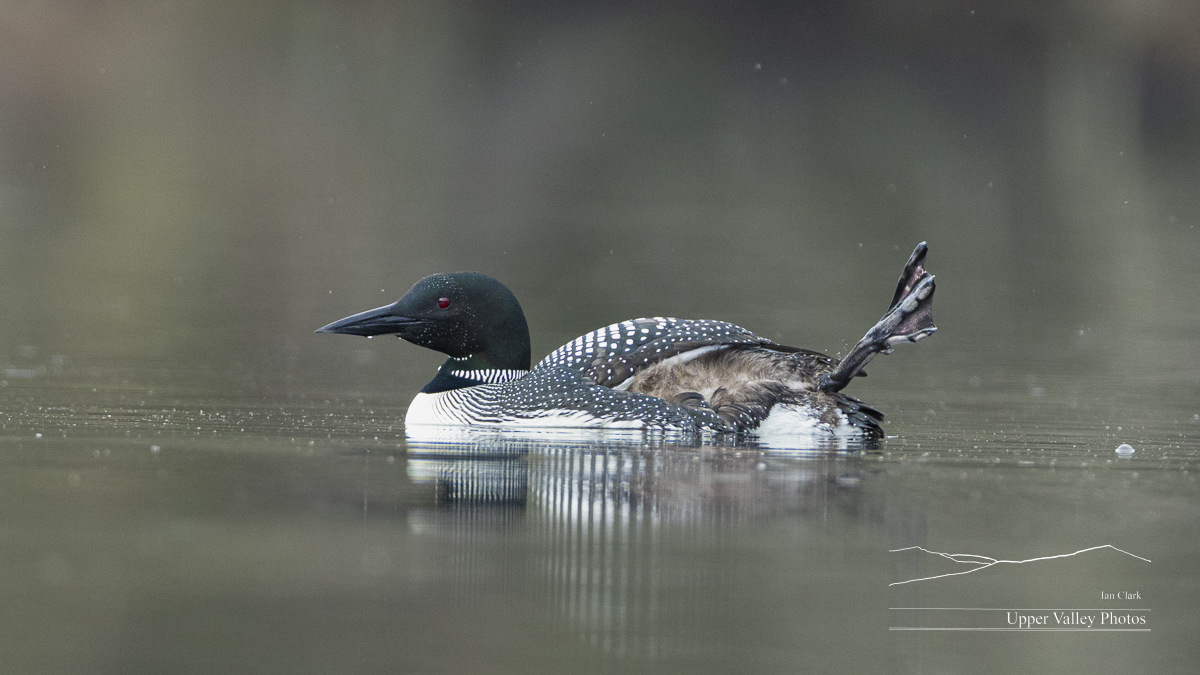
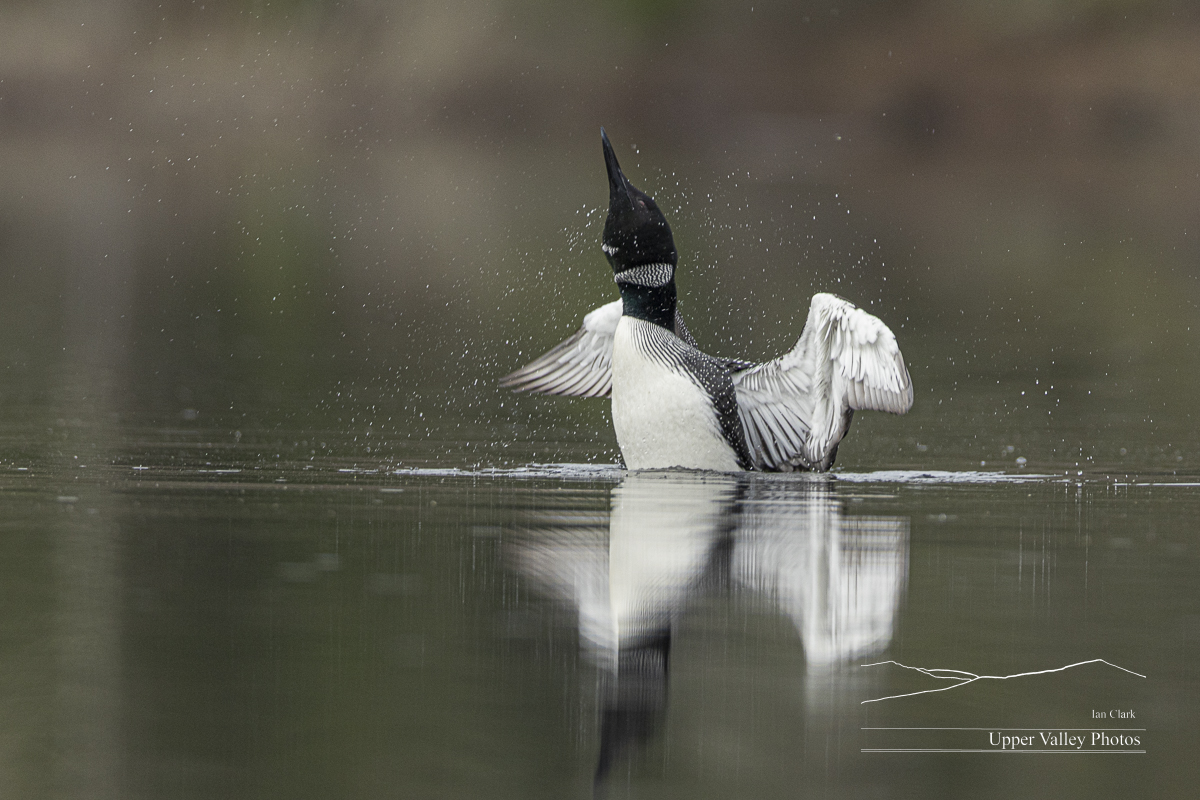
Spring Has Arrived
After several false starts, it looks like spring has arrived to stay in the Upper Valley. Of course, I’m not taking the snow tires off until the second week of May.
Along with the ice going out, our summer residents are arriving back in droves. I spotted six loons on the Middleton’s pond on March 31. By the time I put the boat in the next day, they’d moved on. My bet is they’d been scouting the territory to see which ponds were open and just stopped for a rest and a meal before heading back south. But there were other critters out and about.
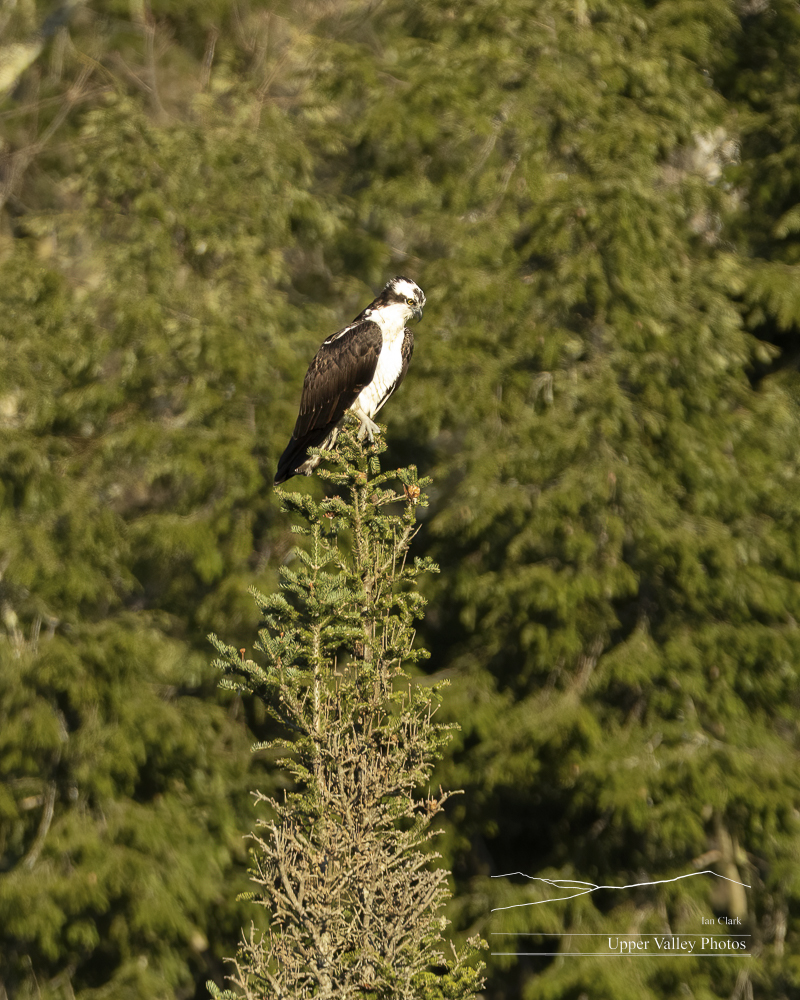
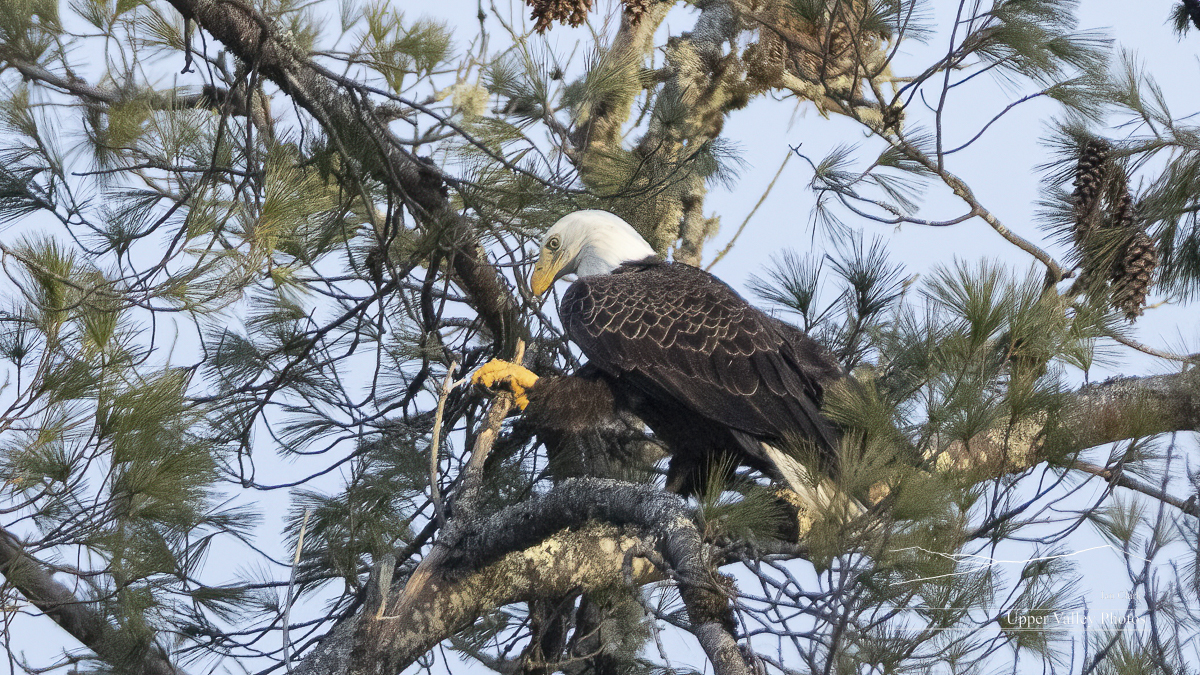
My next trip took me to the Weston’s pond last Sunday. A friend on the pond told me that one loon had arrived back on the April 9. There was still only one loon on the pond.
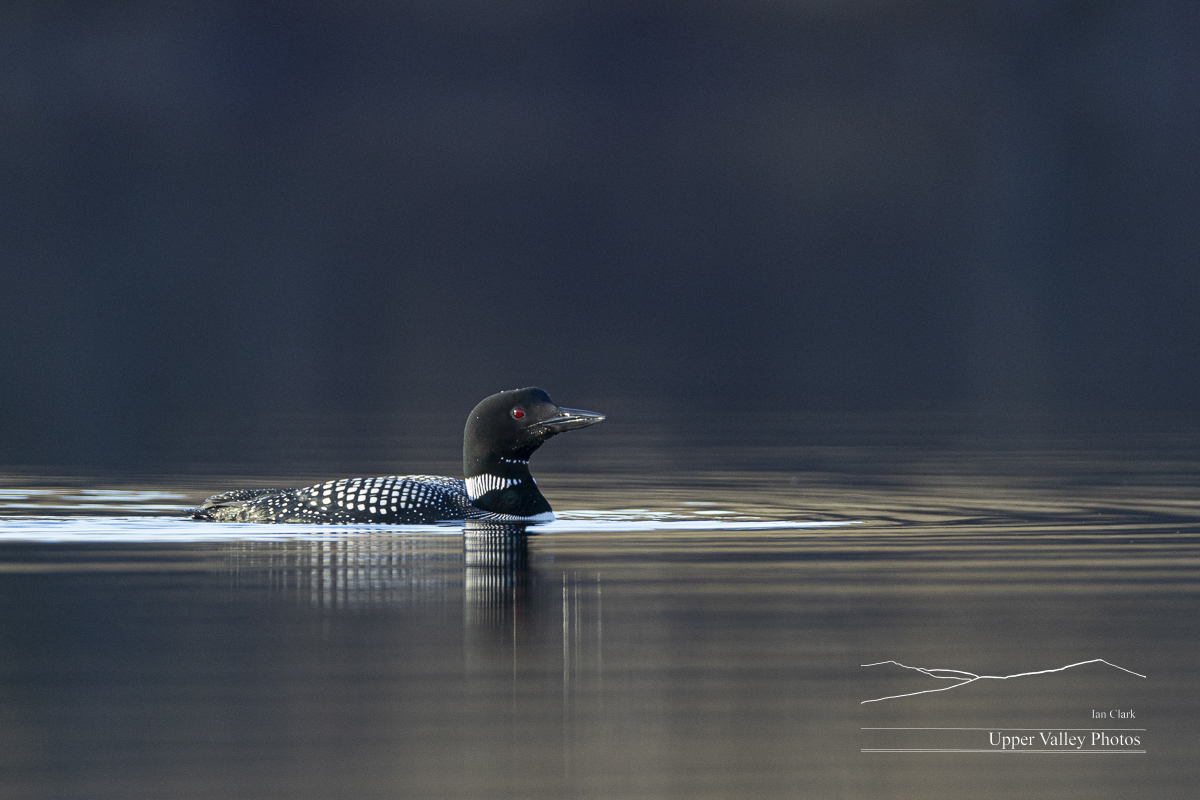
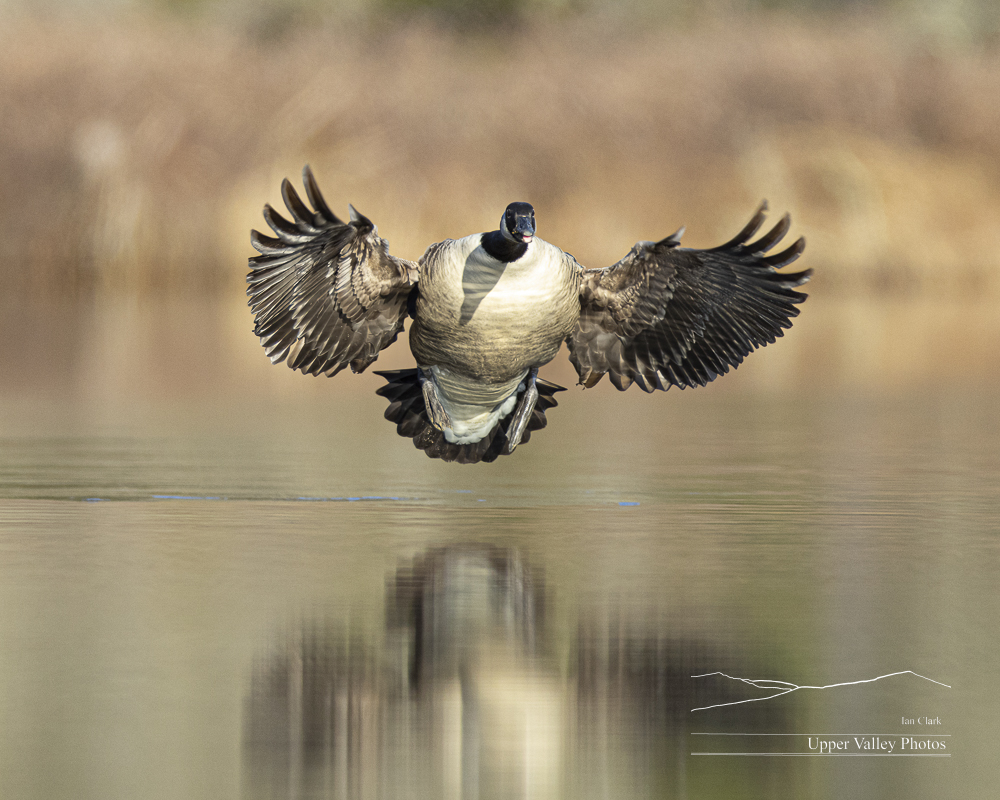

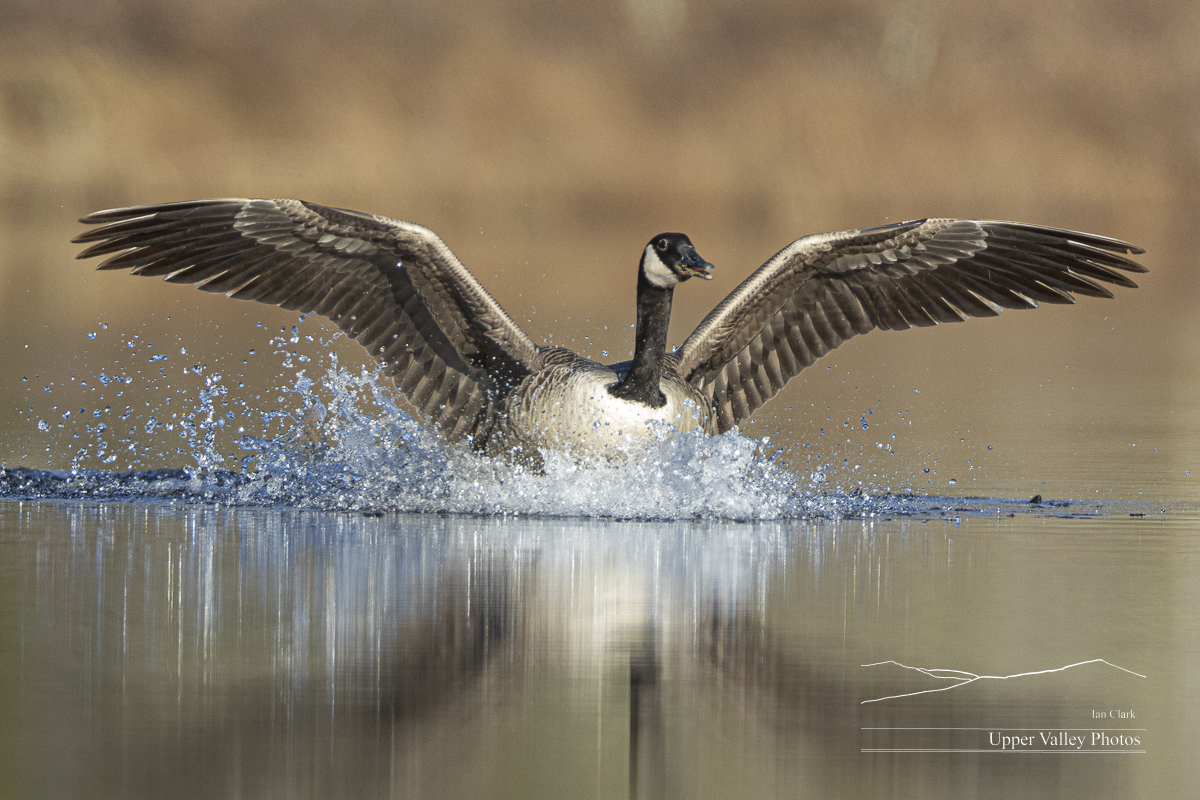
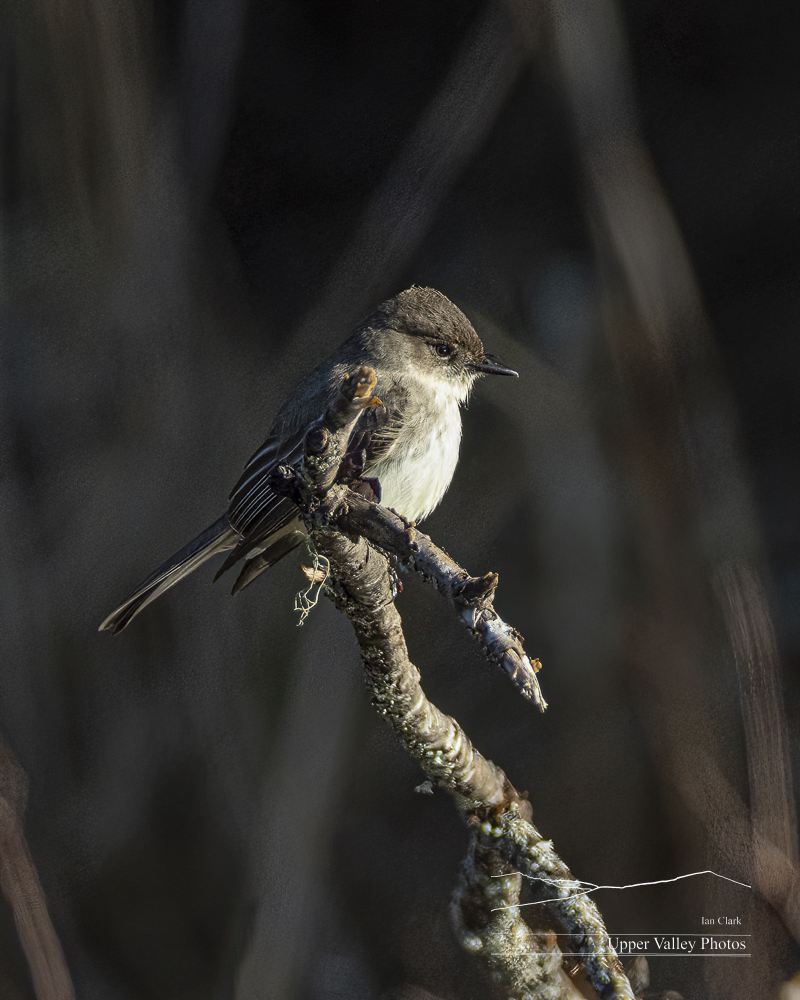
I got back to the Weston’s pond on Tuesday for a brisk paddle – it was 39°F when I put the boat in. We still had only one loon and the geese were causing a ruckus.
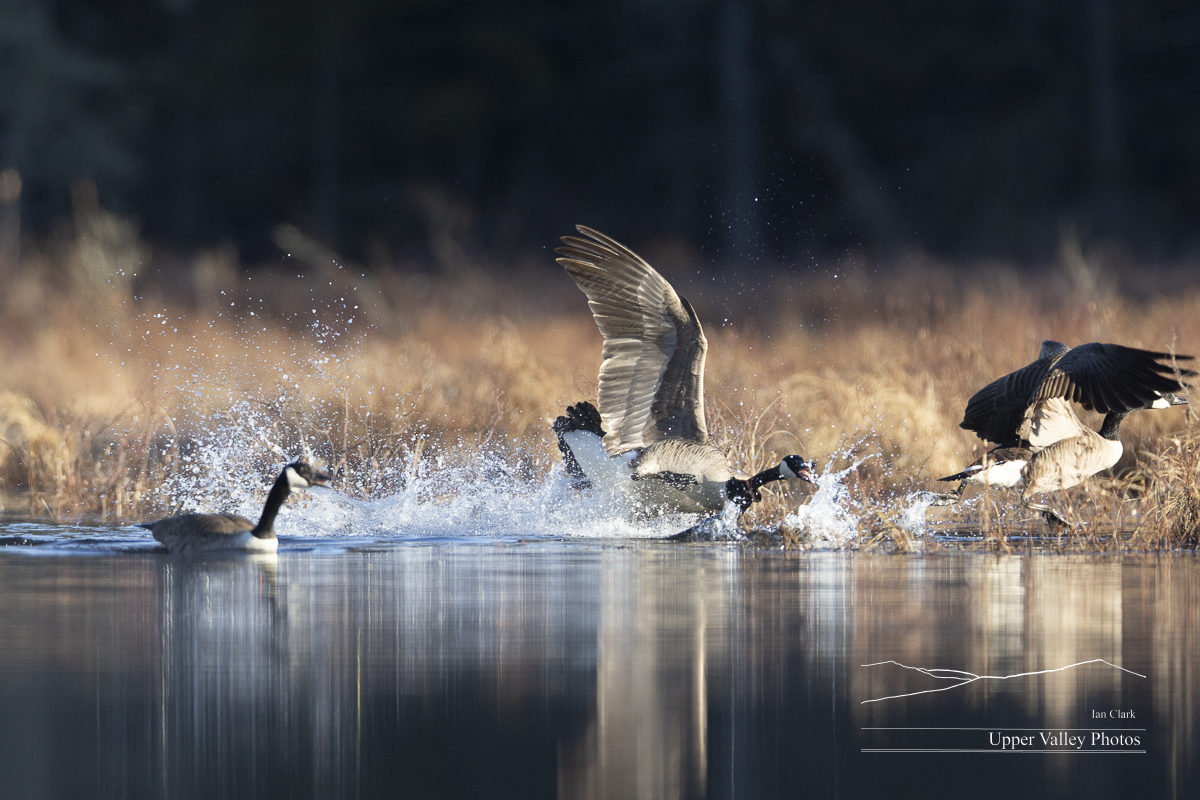

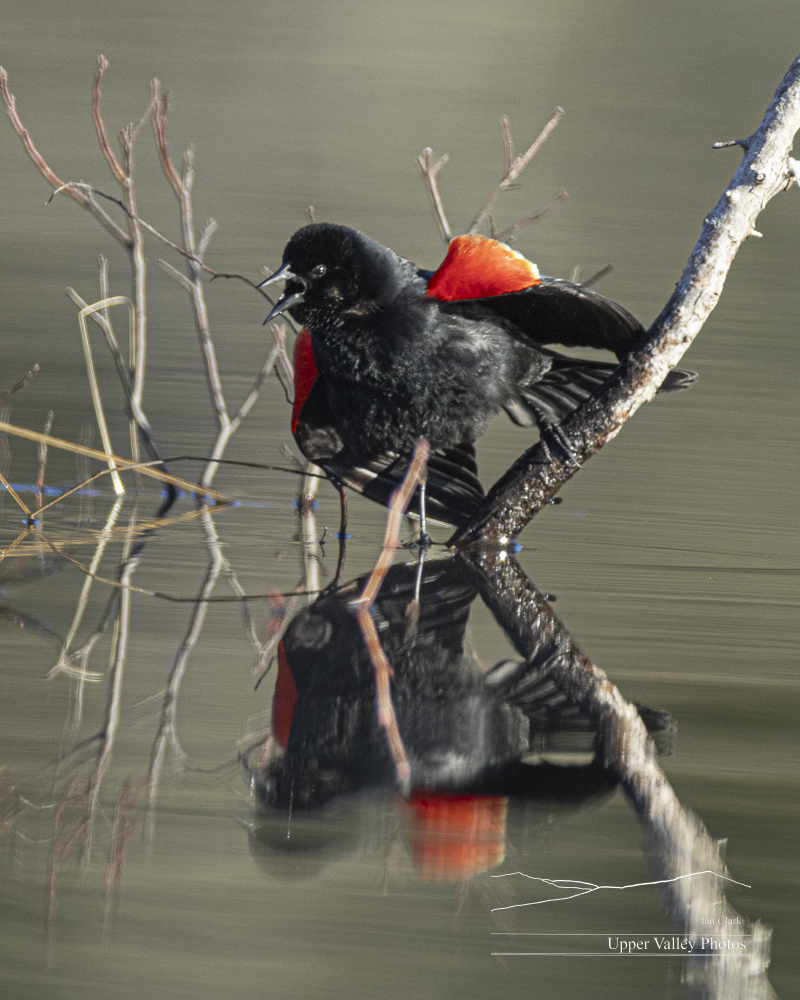
Wednesday morning found me back on the Middleton’s pond. And missing the balmy day before. It was a chilly 28°F as I pushed through a skim of ice to get on the pond. As soon as I cleared the ice, there were trout feeding at the surface. The osprey both made quick work of finding breakfast. And, there were loons.
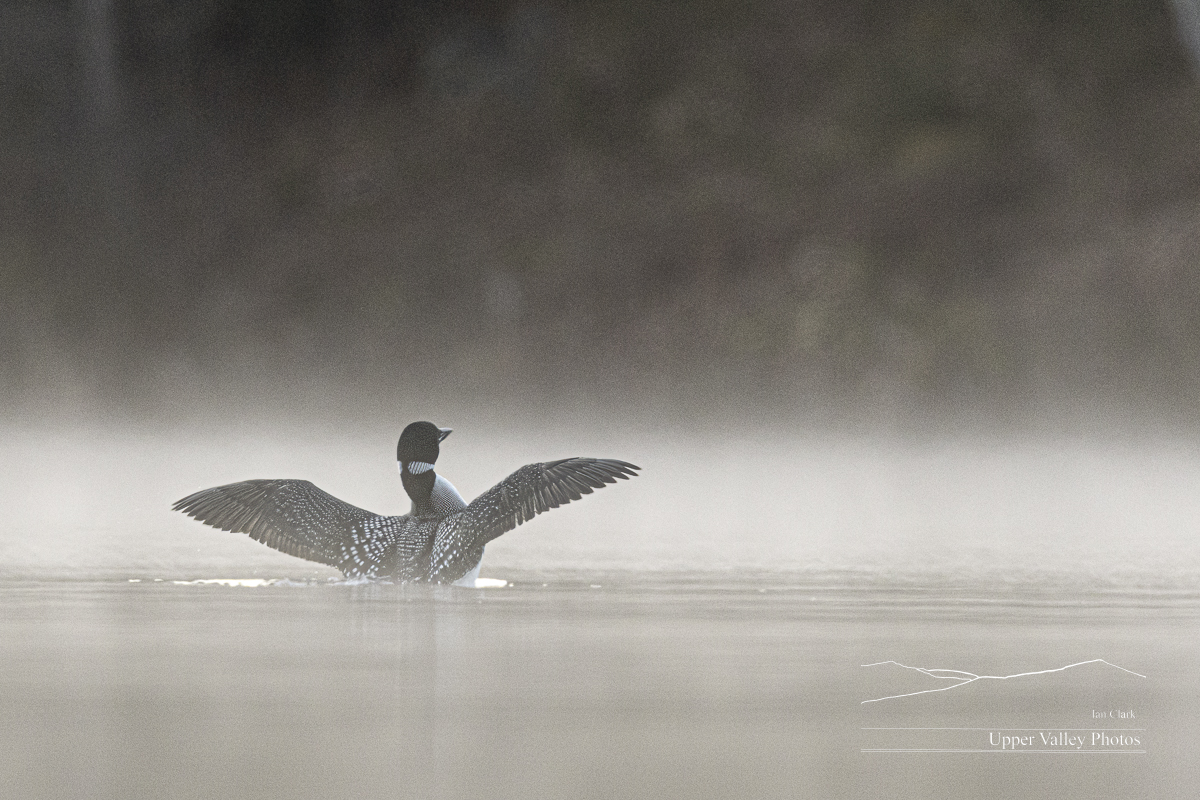
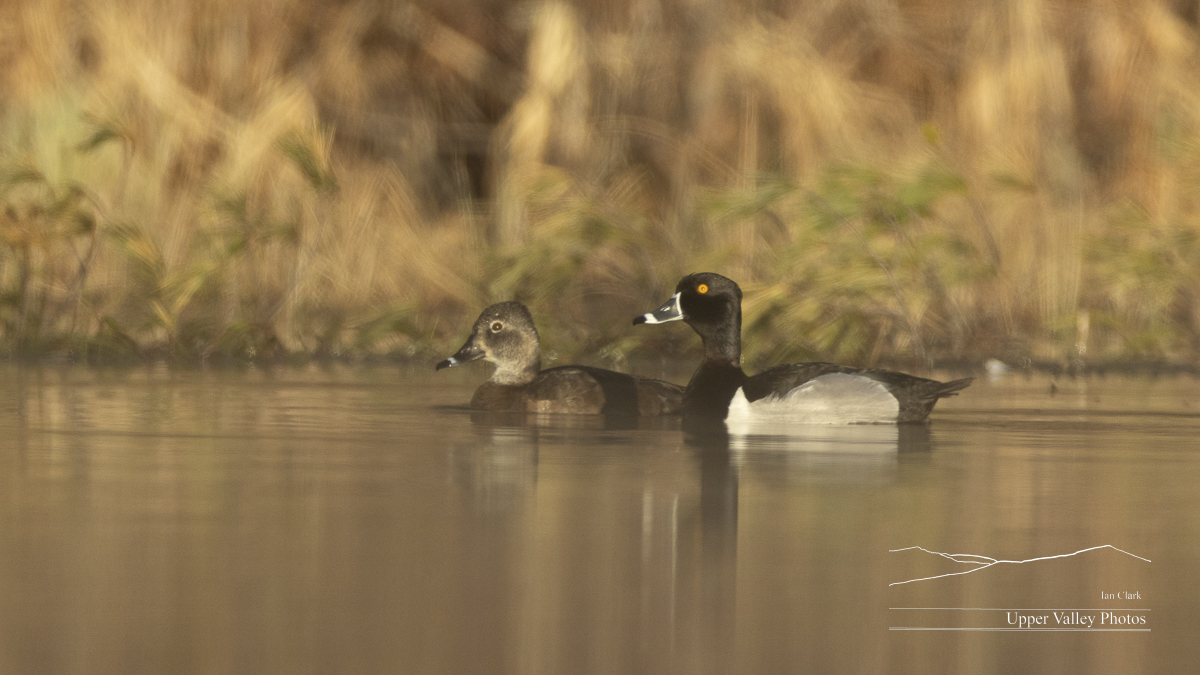
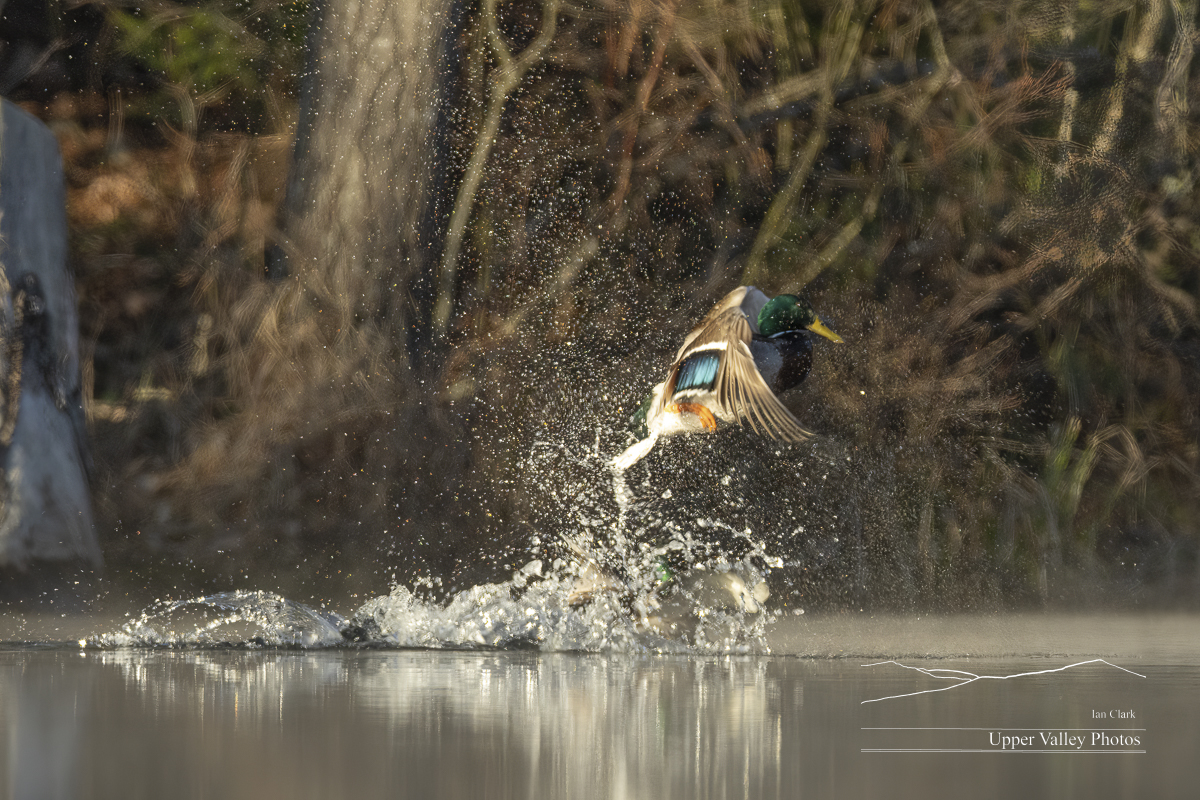

They also spent some time exploring along the shore. The hummock they’ve used for their nest site for several years washed away in the heavy rains last summer. They’ll have to find a new site.
At one point, one loon beached and almost seemed to be presenting. That would be about a month early. The second loon didn’t respond and they soon started off down the shoreline again.

This morning I headed to the Easton’s pond again. Our second loon has returned. As I was putting the boat in, another loon flew over and was challenged by the loons on the pond. A loon flew over the pond on two more occasions, both times flying off after being challenged. The home team spent the morning foraging and preening.
The highlight of the morning was finding three otters feeding and wrestling on the bank of the pond.
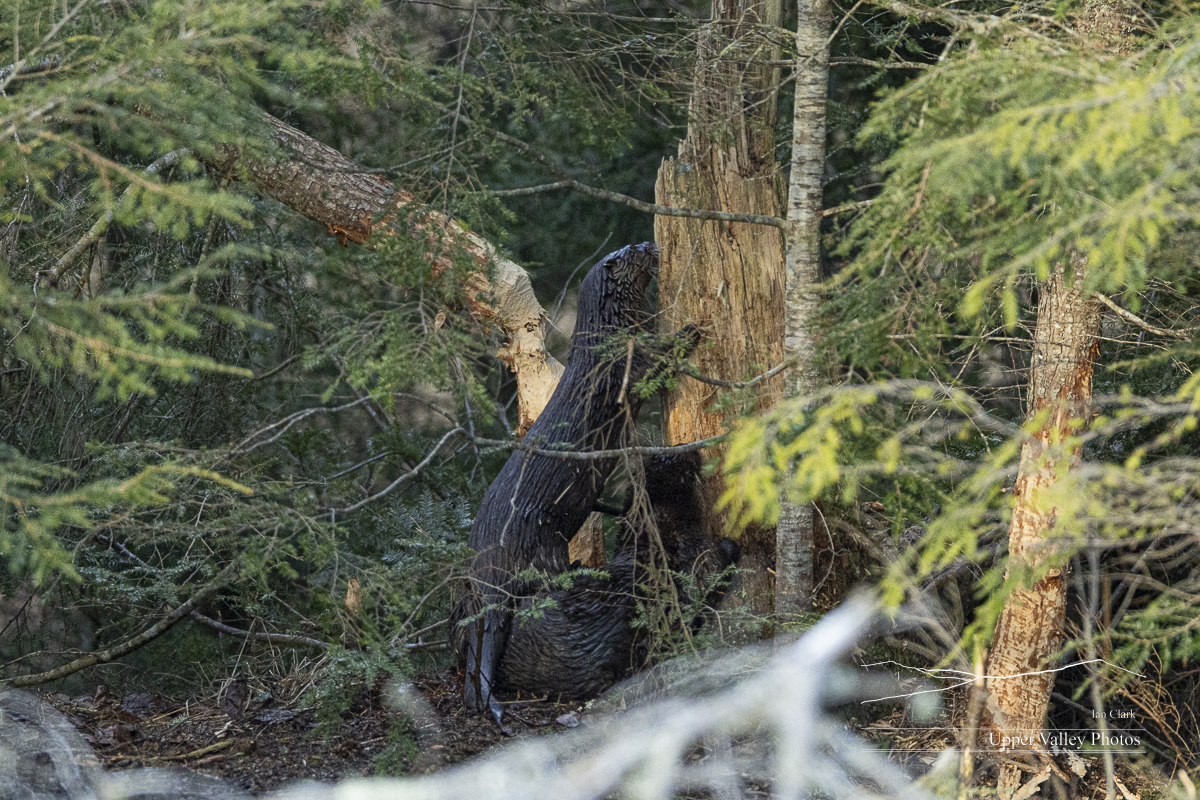
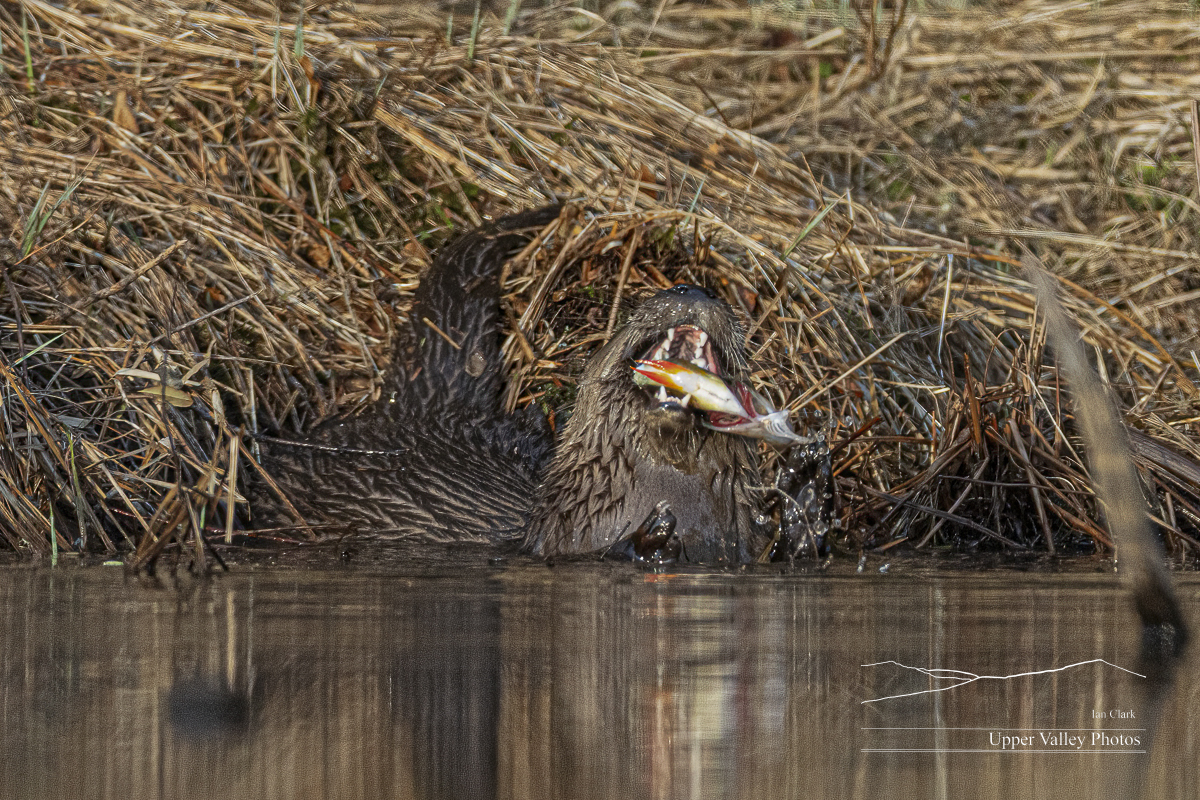
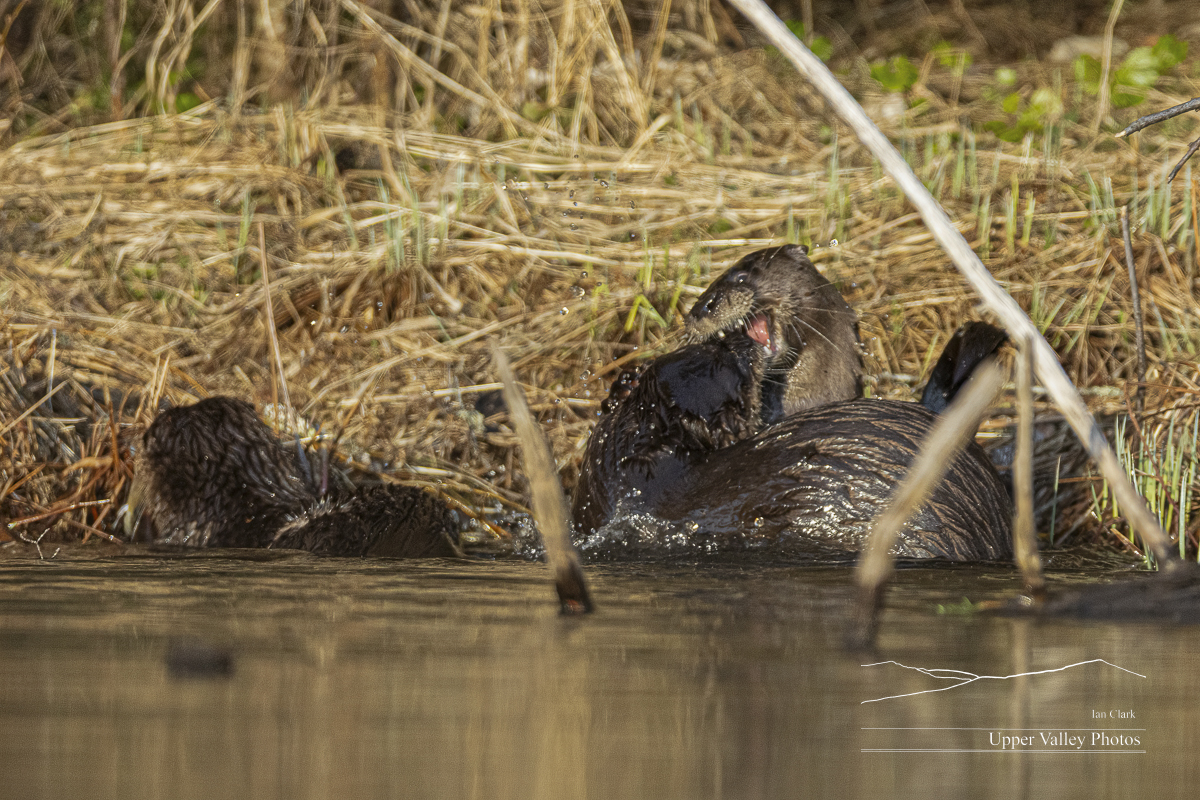

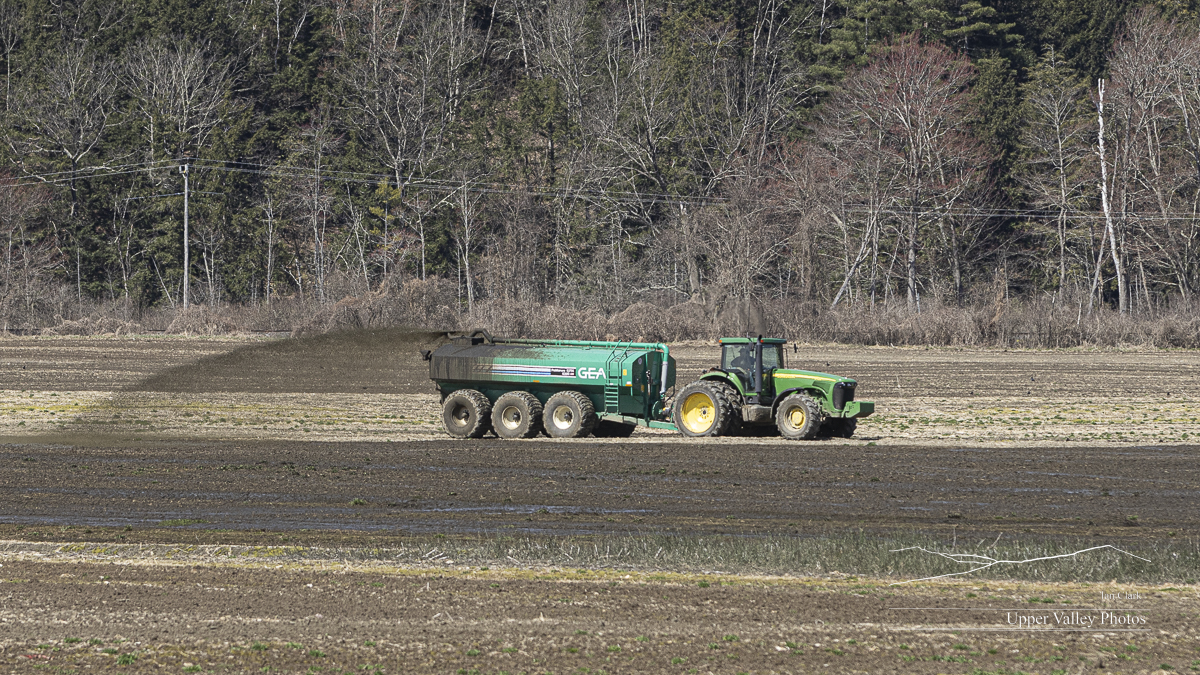
Our bluebirds are again building in our nesting box. I checked the cameras several weeks ago and all seemed fine. But now the camera in the box the birds are using isn’t working properly. We’ll have to skip watching the first brood – I’m not going to disturb the box to get at the camera until the the chicks fledge. Hopefully we’ll be back online for the second brood.
You can sign up to be updated when I add new posts, if you want to follow the loons through the season, go ahead and sign up. And, please share with your friends that might enjoy the wildlife.
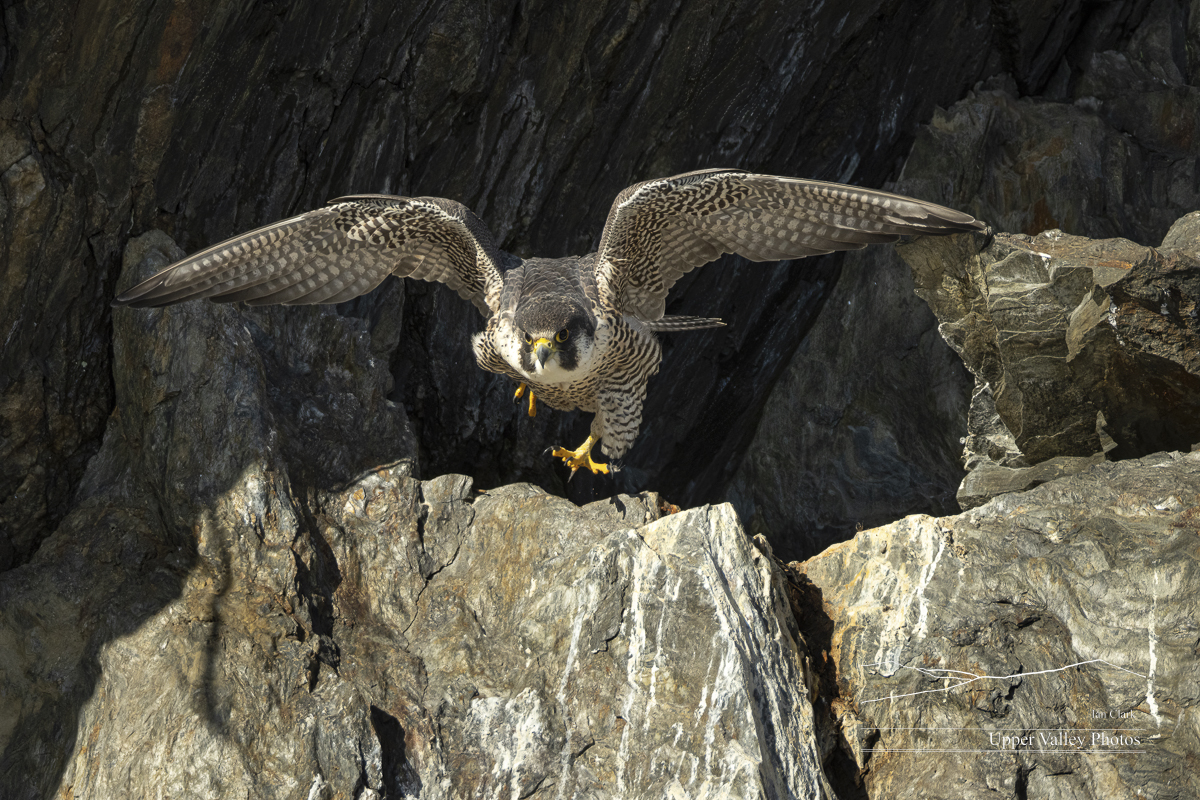
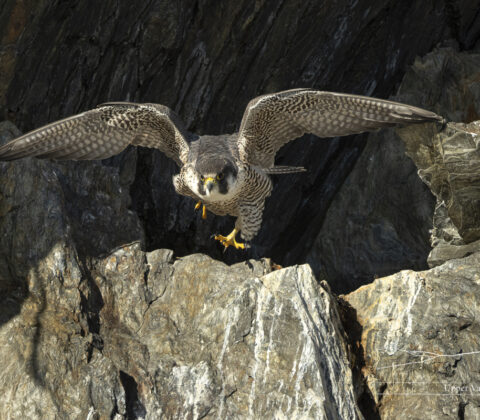
Peregrine Falcons Have Returned
Peregrine falcons have returned to Vermont and are getting ready to nest. I was able to visit a pair in Caledonia County this morning. They spent some time seemingly discussing their nest site, with one promoting last year’s site, the other agitating for a ledge a couple dozen yards to the north. They interrupted the discussion to head out for a flying courtship display. Unfortunately, the display was out of camera range.
Peregrines were extirpated (locally extinct) in Vermont after the introduction of DDT. The state started a recovery effort in 1975 and the population is increasing again. The last year I could find figures for was 2022, when there were an estimated 60 pairs nesting in Vermont.
Peregrines are thought to be the fastest animal on earth. They can dive in flight. Estimates online range from 200 to 240 mph, without my finding anyone who claims to have actually clocked a flying falcon. But, seeing one dive is indeed impressive and the estimates are believable.

